Hydrogen peroxide has been around for hundreds of years, and in that time humans have come up with all sorts of things to do with it. First used to bleach hats, the very pale blue liquid now has medical, beauty, and domestic uses. The liquid can be used as a bleaching agent, an antiseptic, and an oxidizer. Because of this, hydrogen peroxide kills fungi, mold, yeast, bacteria, and even viruses. So get yourself a fresh bottle of hydrogen peroxide, and see what needs to be done.
Keep Your Breath Fresh
First things first — when using hydrogen peroxide on or in your body, make sure you’re using a food-grade product. Once you’re certain you have something that’s safe to put in your body, swirl a mouthful of hydrogen peroxide around your mouth to kill bad breath.
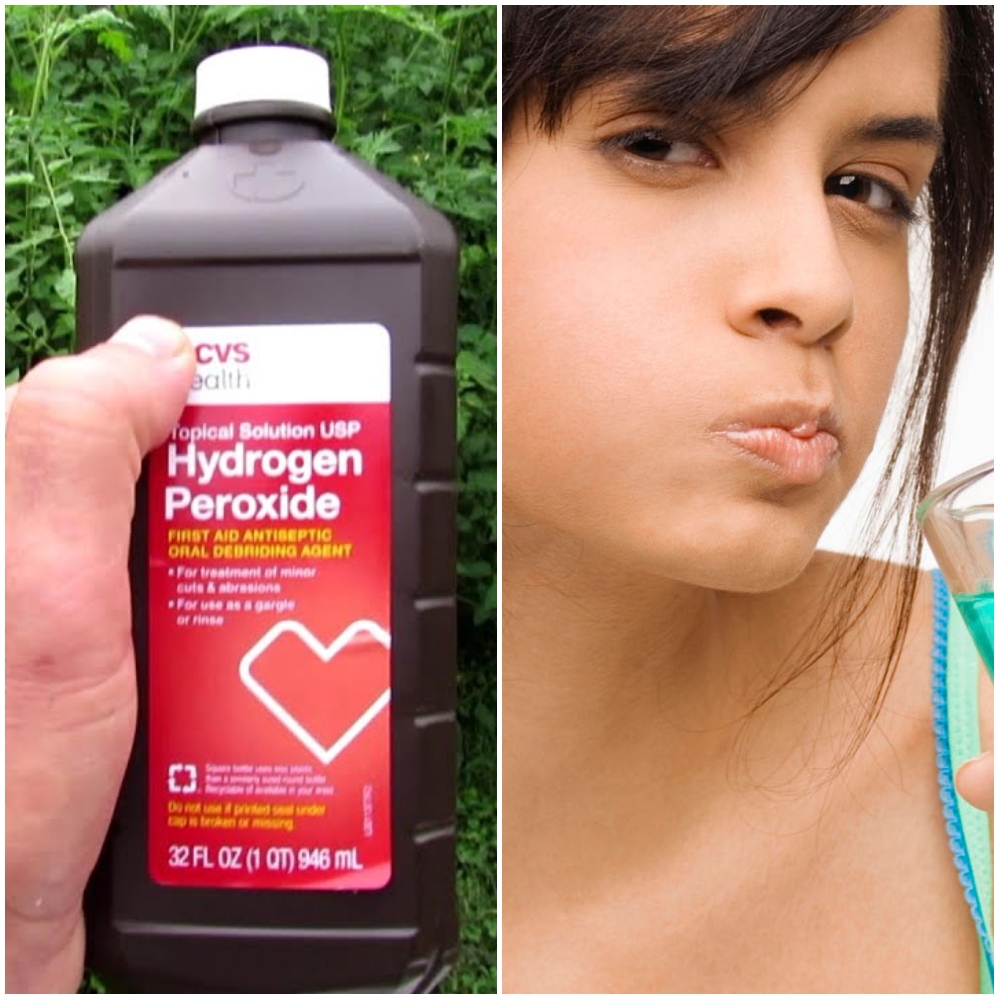
Because hydrogen peroxide kills germs and bacteria, it can actually be more effective than regular mouthwash. Simply mix some of the liquid with water, swish around your mouth, and spit out.
Disinfect Counters and Surfaces
Because of hydrogen peroxide’s bacteria killing functions, the liquid can be used as a cleanser for just about anything. To make your own surface cleaning spray, just take some of the 3% hydrogen peroxide solution and put it in a spray bottle. That’s it! There’s no need to dilute it or anything.
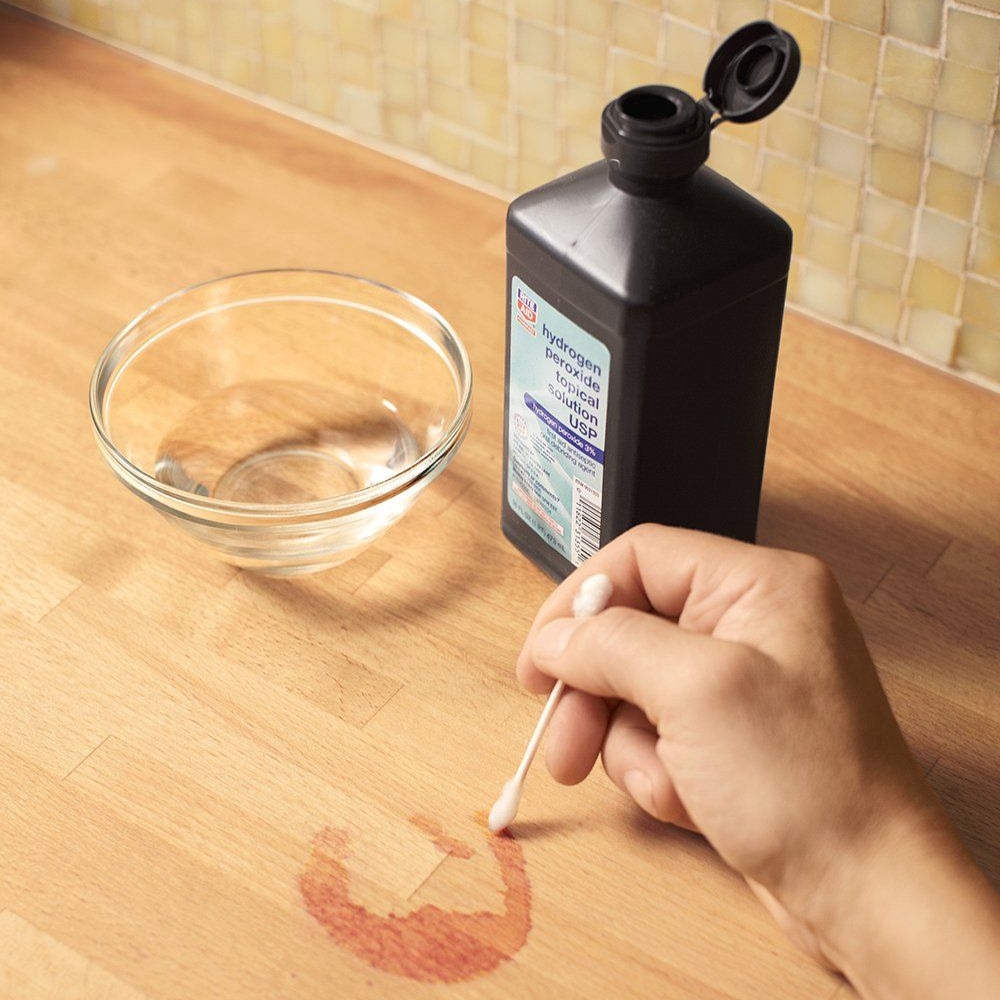
To use, just spray your solution onto a surface, let it sit for a few minutes, and then wipe it clean. Say goodbye to sticky surfaces and crumb covered countertops.
Clean Your Washing Machine
It might sound strange to clean a washing machine — after all, doesn’t it wash things? But, your washer also needs a spring clean every now and then. Washing machines can easily get clogged up with loose hairs, pieces of lint, and random objects left in pockets.

To freshen up your washing machine, reach for your bottle of hydrogen peroxide. Add the liquid to the detergent section of the washer, and then put the machine on a hot wash cycle.
Disguise Your Roots
As well as containing excellent cleaning power, hydrogen peroxide can also be used to lighten hair. Now, we’re not saying that you can just dye your entire head of hair with this stuff, but you can certainly touch up your roots.
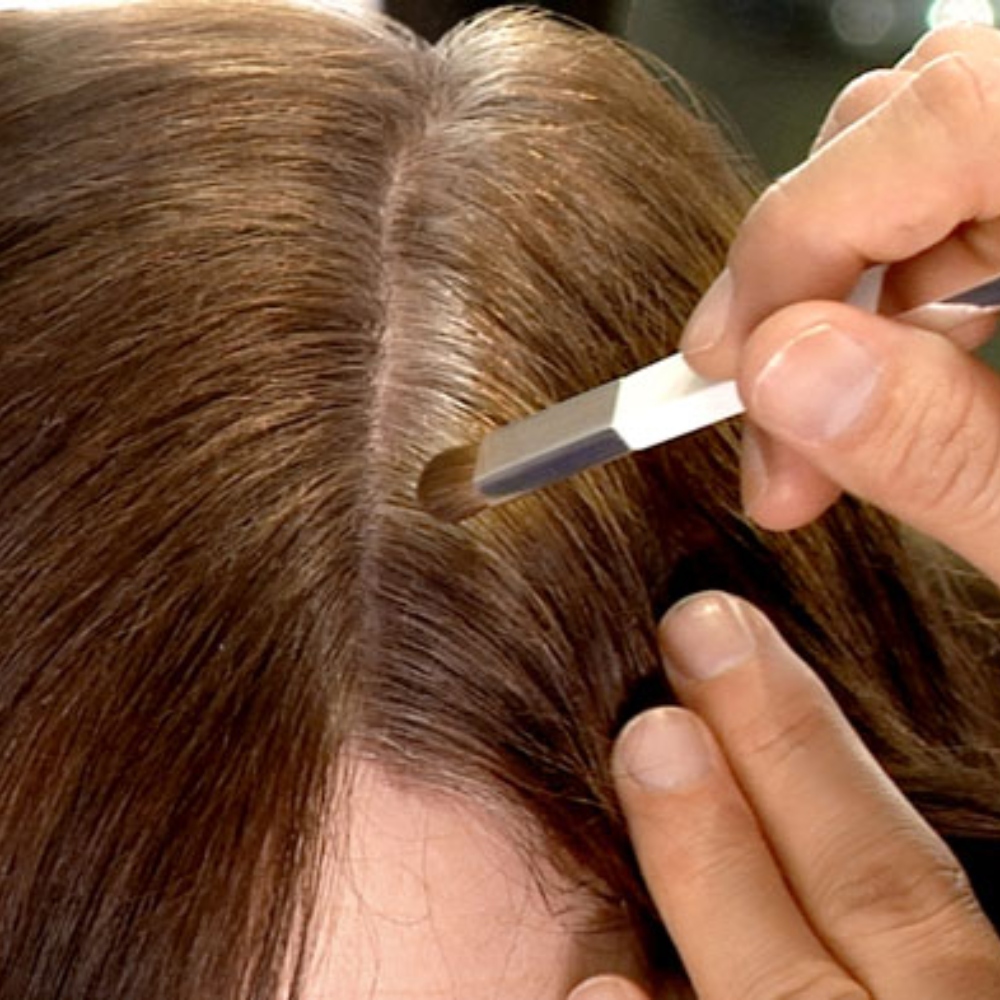
Used as a hair dye, hydrogen peroxide is oxidative, which means that it dyes the hair through a chemical reaction. This type of dying is more permanent, but it’s also rather stressful on the hair.
Disinfect the Toilet Bowl
We’ve already recommended hydrogen peroxide as a great cleaning tool for surfaces, so why not throw some in the toilet too? To clean dirty loos, pour half a cup of hydrogen peroxide into the toilet bowl and leave it there for 20 minutes to half an hour.
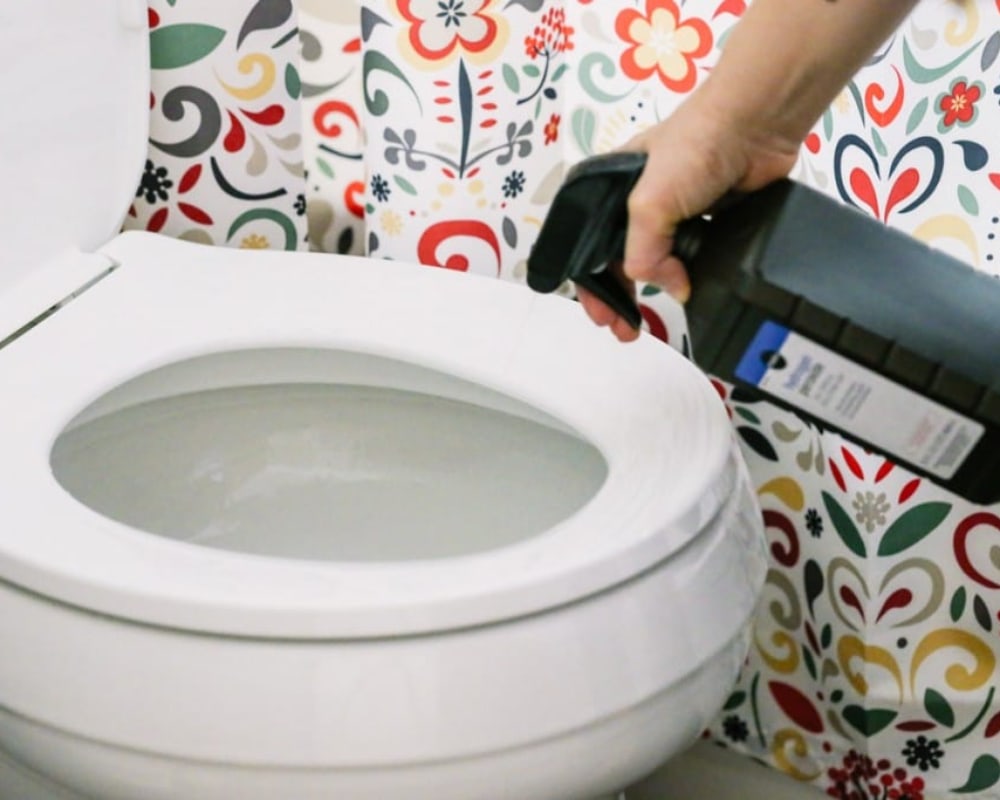
After the allotted time, brush and flush the toilet to find it looking sparkling new. This is a more environmentally conscious way to clean too, as bleach contains many corrosive and harmful chemicals.
Kill Mold Spores
Likewise, there’s no need to turn to bleach or other corrosive chemicals when trying to rid your house of mold. If you come across some of the pesky spores on household fixtures, clothing, walls or appliances, go ahead and grab your trusty hydrogen peroxide.
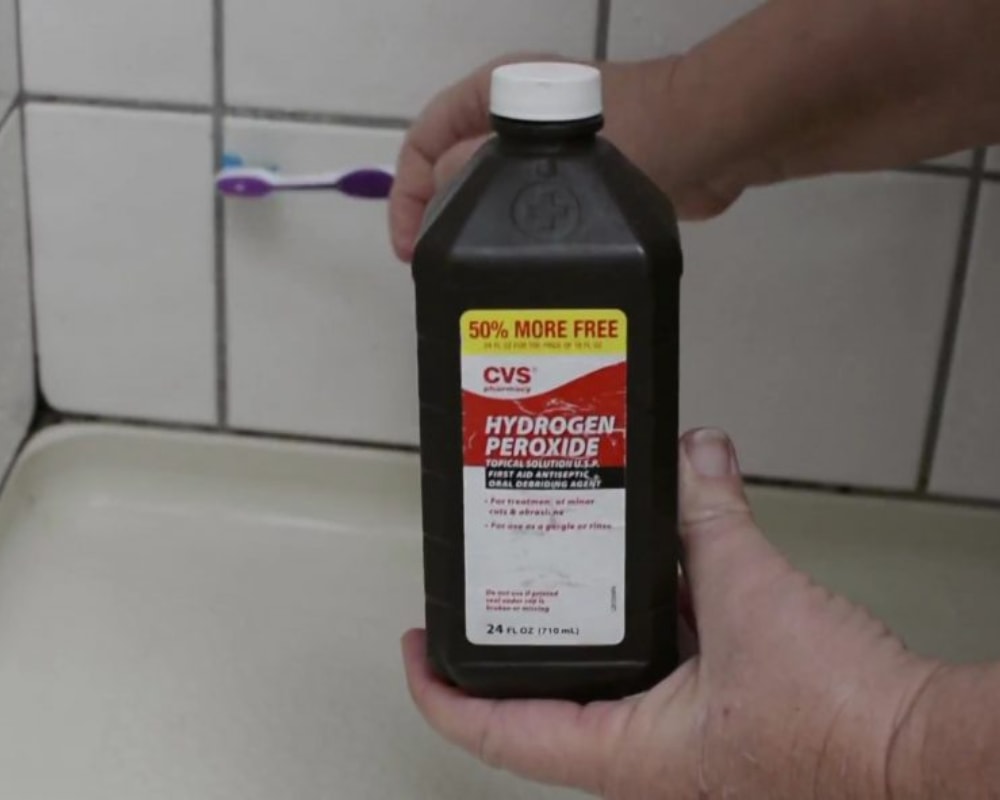
As with the surface cleaner, use 3% hydrogen peroxide to kill mold, and transfer it to a spray bottle. Spray the product onto whatever mold you’re trying to kill until it’s completely saturated with hydrogen peroxide.
Make a Dishwasher Bomb
Despite dishwashers being used to clean things, they still can suffer from a buildup of food debris, grease, and grime. To combat this, use hydrogen peroxide to make a dishwasher bomb.
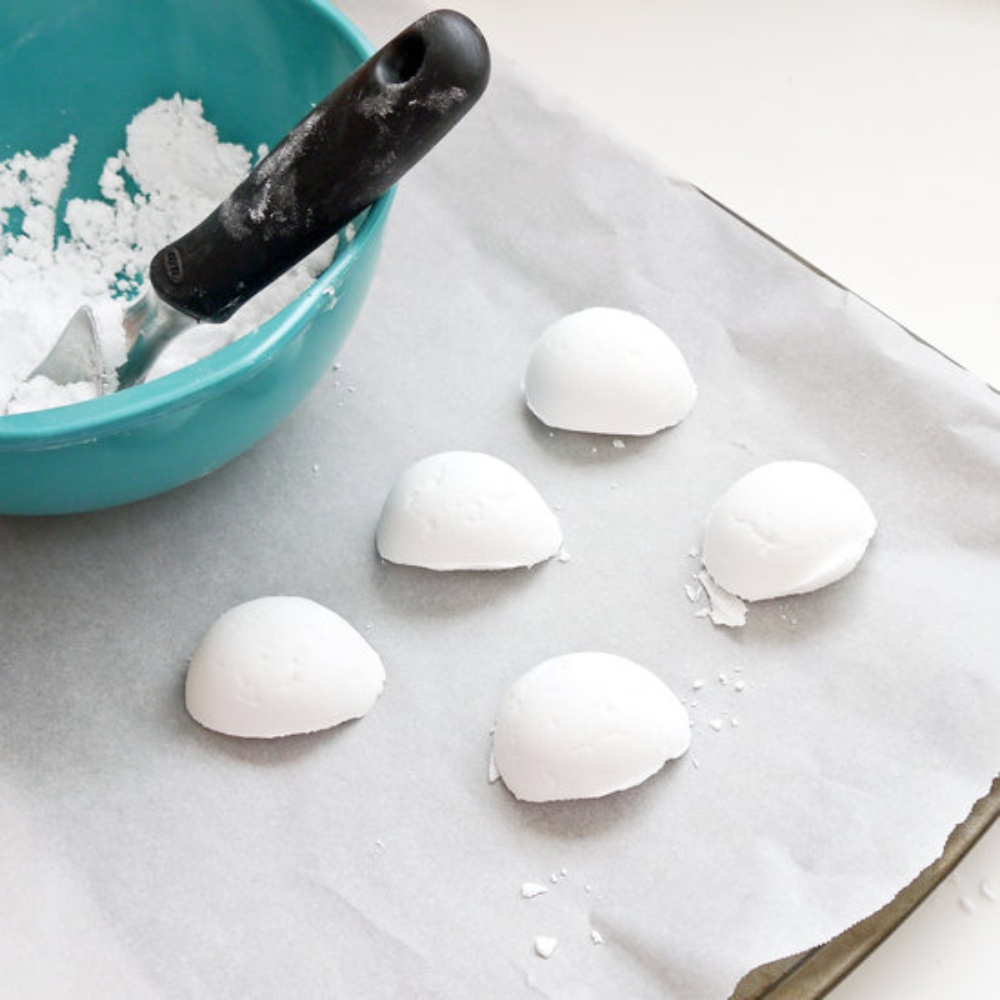
To make, mix one cup of baking soda with two tablespoons of hydrogen peroxide until it looks like damp sand. Add 20 drops of essential oil, stir, and scoop with a tablespoon. Let bombs dry overnight on parchment paper, then drop one in the cutlery caddy and run on a hot wash.
Refresh Reusable Totes
In order to be environmentally friendly, many of us now use reusable cloth totes when we go grocery shopping. However, because we use these bags for foodstuffs or random belongings, we can forget to give them a thorough cleaning every once in a while.
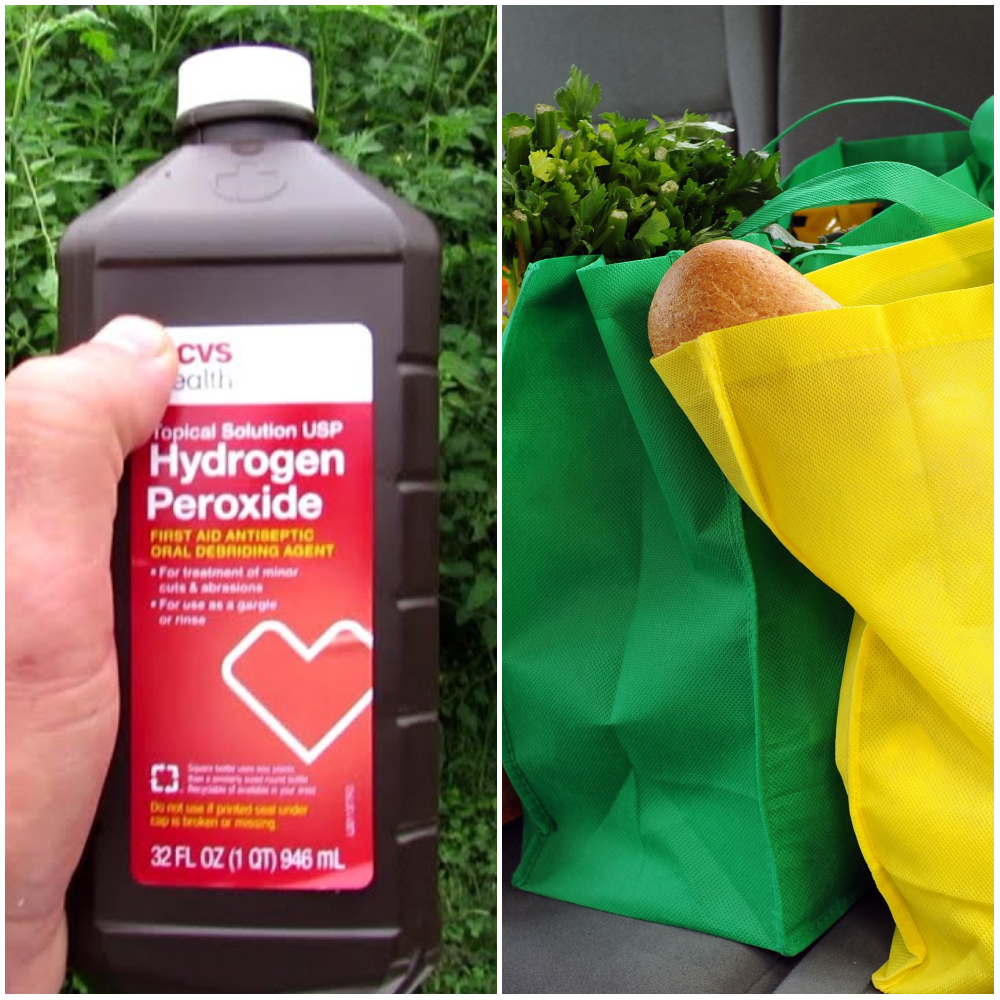
To avoid carrying around grimy and grubby bags, spray your reusable totes with hydrogen peroxide in between uses. This will keep bags fresh and ready to carry your precious produce home.
Make Windows Shine
Hey, if hydrogen peroxide can be used to clean countertops and toilet bowls, imagine what it can do on mirrors or windows. There’s no need to buy a specialized glass cleaner because hydrogen peroxide does the trick just as well.
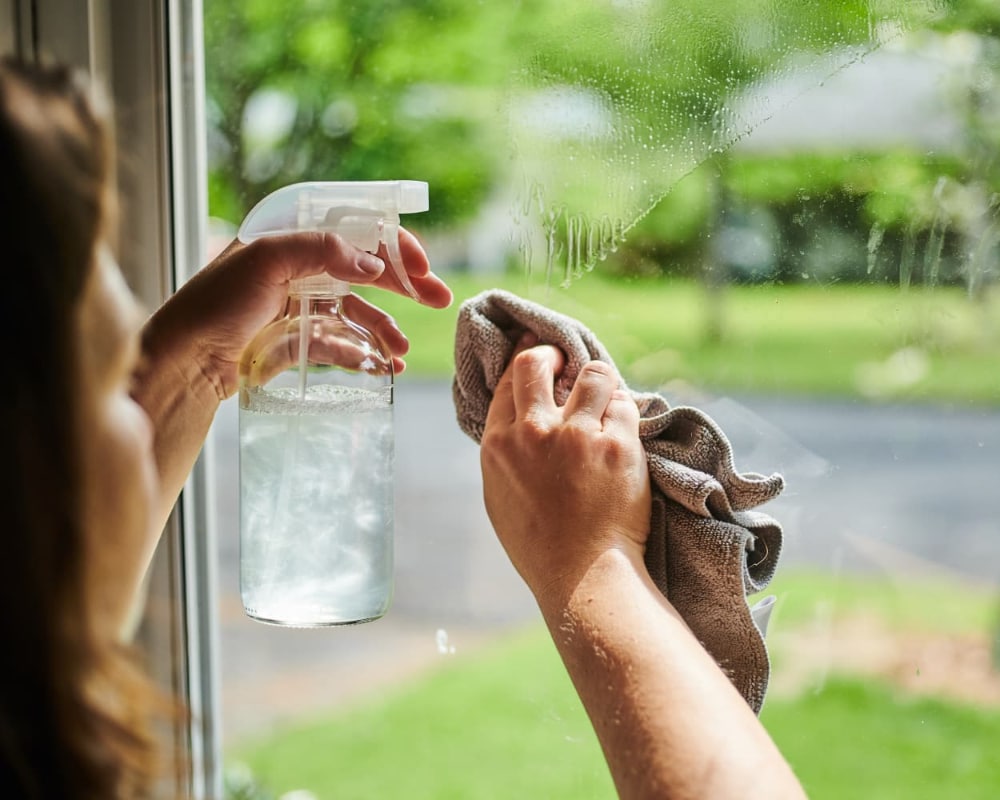
For glass cleaning, just pour ¾ cup of hydrogen peroxide into a spray bottle along with one or two drops of dish soap. Top the bottle up with water, shake, and spray onto the windows. Let the mixture sit for a few minutes, and then wipe.
Brighten Dirty Laundry
Many people prefer using hydrogen peroxide instead of bleach or other cleaning products because it’s completely non-toxic. The liquid is similar to water, but contains an extra oxygen molecule that makes it very reactive. This makes the liquid a great alternative to bleach, especially when it comes to laundry.
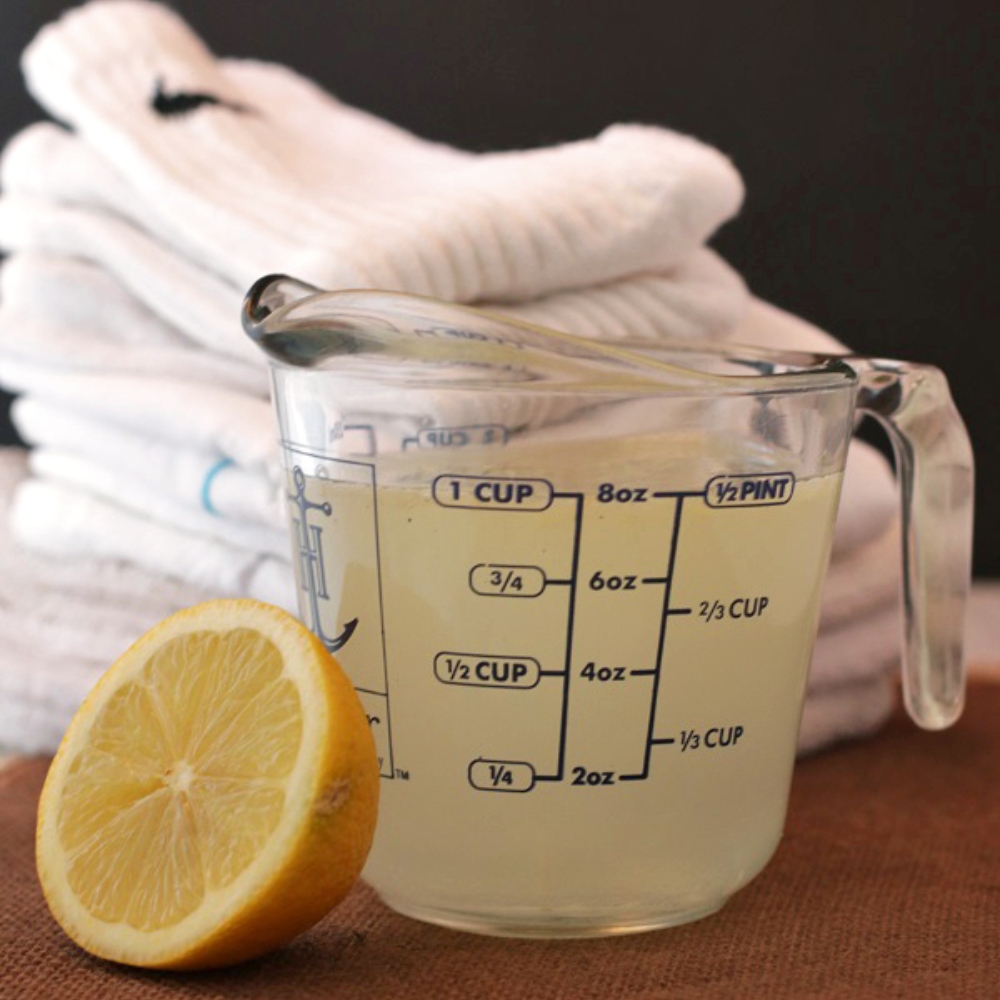
Use hydrogen peroxide to brighten your whites by adding a cup of it to the bleach section of your washer. Likewise, add it to a load of diapers to disinfect and deodorize.
Heal Small Cuts
There’s some disagreement around whether hydrogen peroxide should be used on cuts or not. Web MD claims that the product can actually delay healing and harm tissue, but other sources state that it can be used to clean minor cuts and scrapes. In that instance, use the 3% solution.

When applied to the skin, hydrogen peroxide bubbles on the wound surface. This is evidence that the solution is attacking bacteria in the wound, but it’s also likely that it’s damaging healthy cells.
Soften Hard Calluses
Corns and calluses come about because of a range of reasons, including wearing tight shoes, doing lots of sport, having a medical condition, or not wearing socks. Though they’re usually not particularly painful, calluses aren’t exactly pleasant to look at and can be softened with some trusty hydrogen peroxide.

To make a callus softening foot soak, add 3% hydrogen peroxide to a small tub of water and mix well. Soak feet for 15 minutes, rinse with water, and let feet dry.
Keep Plants Healthy
Keen gardeners know that plants can suffer some fungal infections. One way to stop the spread of such infections is to spray your plants with a hydrogen peroxide mixture. Get a trusty spray bottle, and fill it with two cups of water and four teaspoons of 3% concentrate hydrogen peroxide.
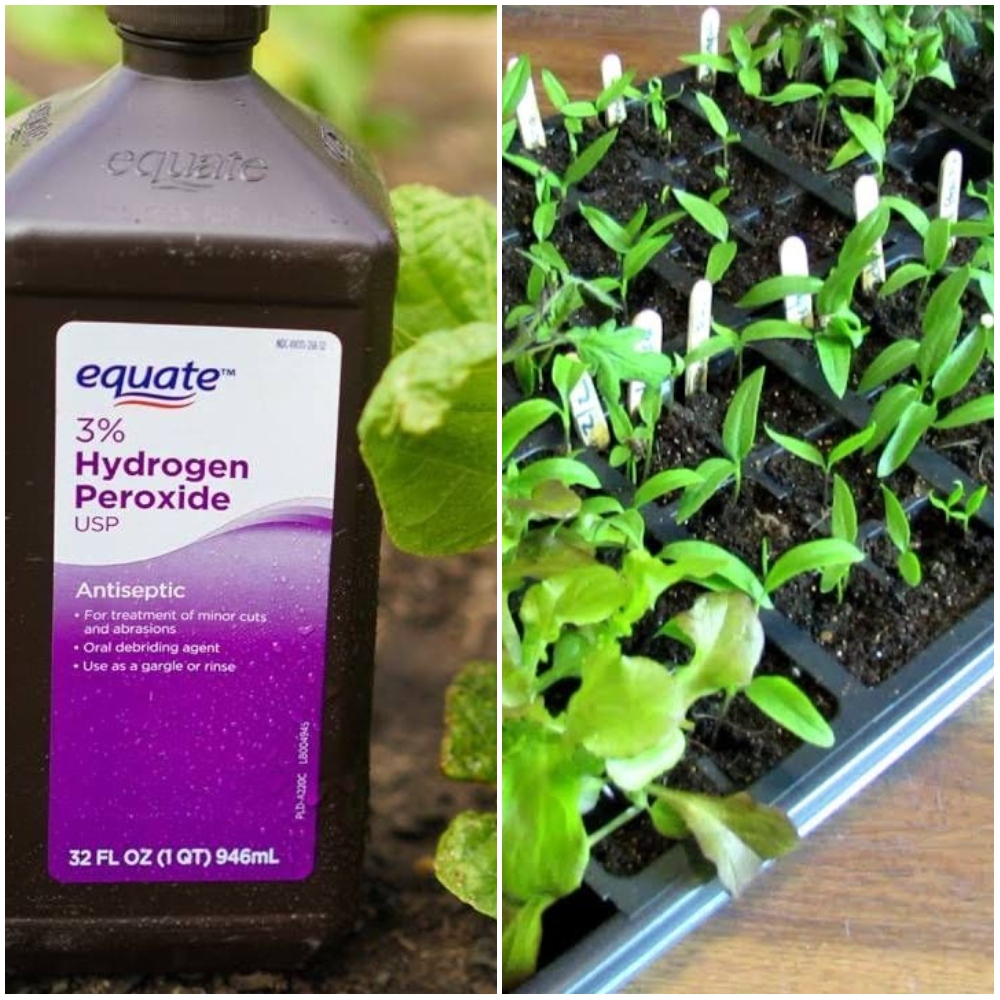
Mist your plants regularly with the solution to keep them happy and healthy. Hydrogen peroxide also encourages root growth due to its extra oxygen molecule, and it even keeps pests away.
Give Seeds a Boost
Since hydrogen peroxide is so effective on plants, it comes as no surprise that it’s also effective in seed germination. It’s thought that the compound breaks down the seed coat, allowing it to take in more oxygen, and increase its germination rate.
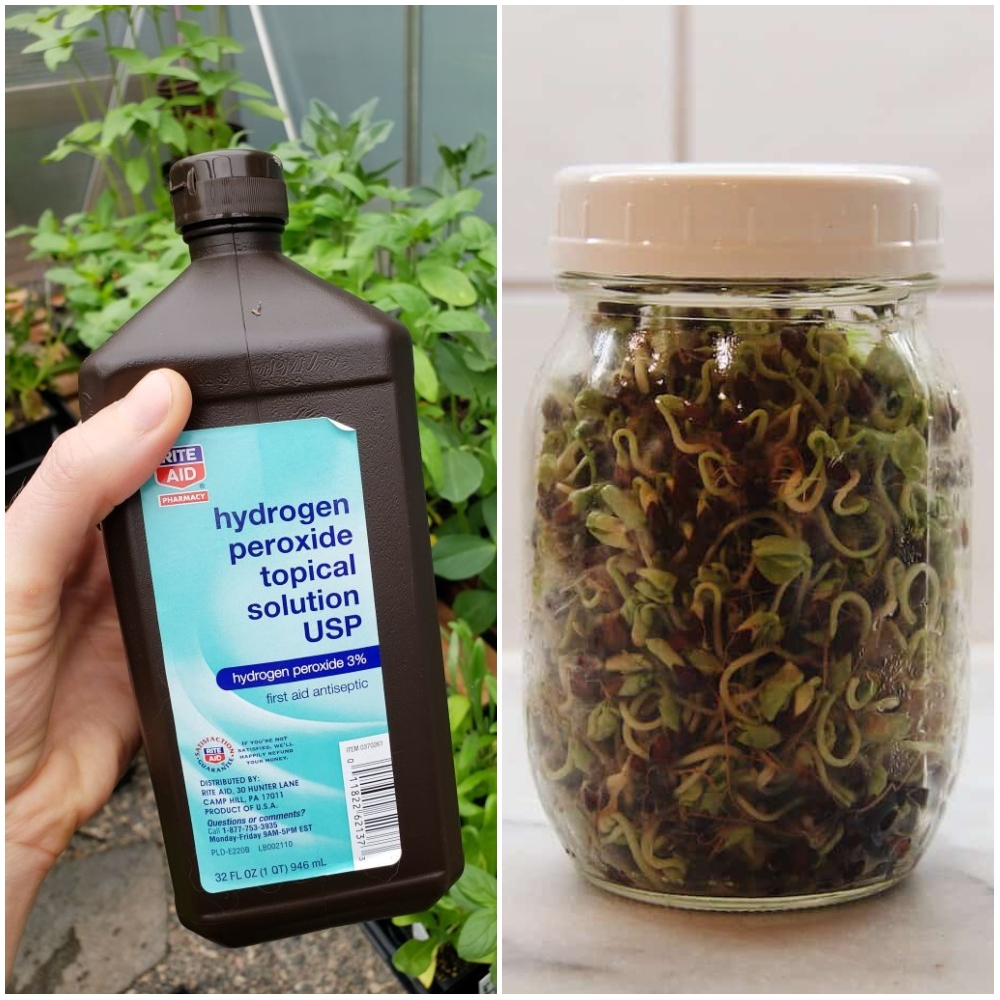
To use the compound in this way, soak seeds in 3% hydrogen peroxide for half an hour. Rinse seeds in water several times, then plant. This method also kills any pathogens that might be present on the seeds.
Disinfect Cutting Boards
Cutting boards can get pretty nasty after multiple uses. The boards are used for cutting meat, mincing garlic, prepping veggies, and filleting fish — they really see a lot of action compared to other kitchen items. For this reason, it’s likely that soap and water aren’t enough to completely disinfect a cutting board.
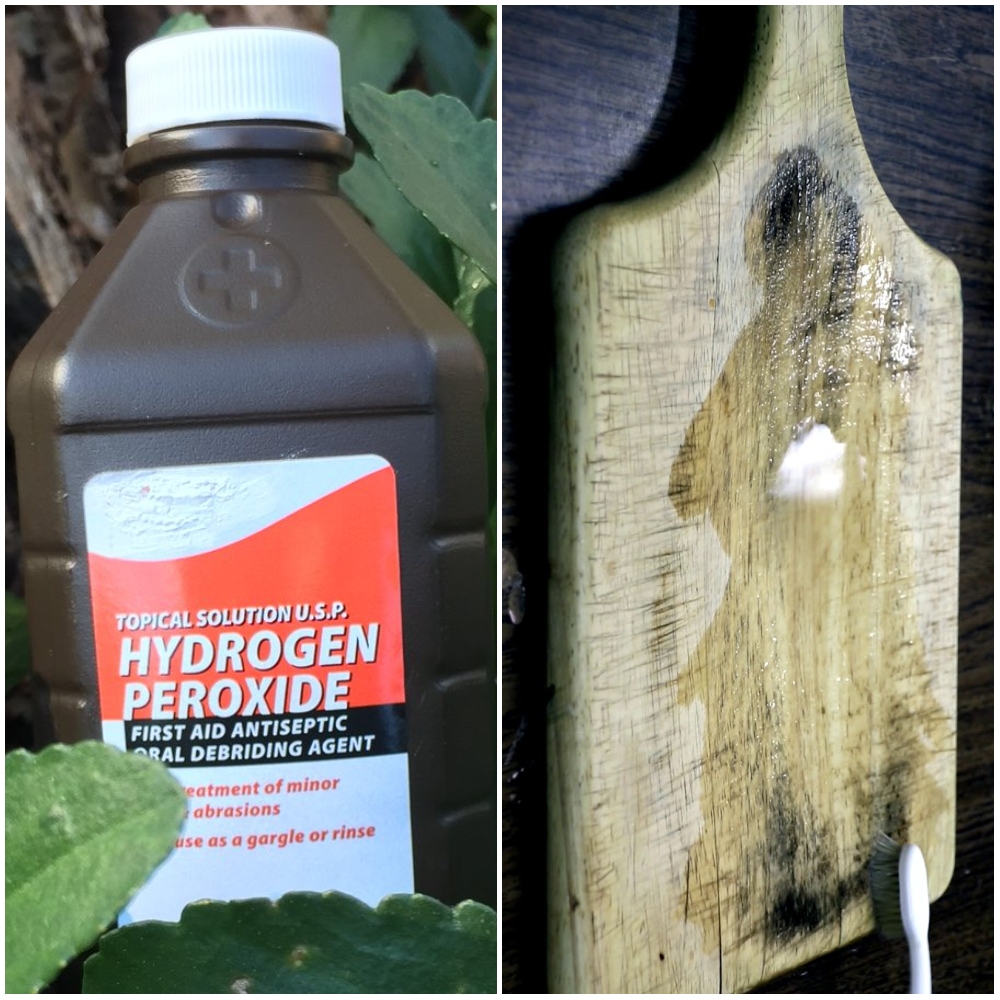
Instead, pour 3% hydrogen peroxide on the board, spread it using a sponge, and let it sit for several minutes. Using a clean sponge, wipe off the excess liquid.
Sort Out Your Pond
Garden ponds can be a delightful feature in a home, but they are host to all sorts of algae that can leave a pond looking murky and green. Because of its anti-bacterial and anti-fungal properties, hydrogen peroxide is regularly used as a treatment for algae overgrowth in backyard ponds.
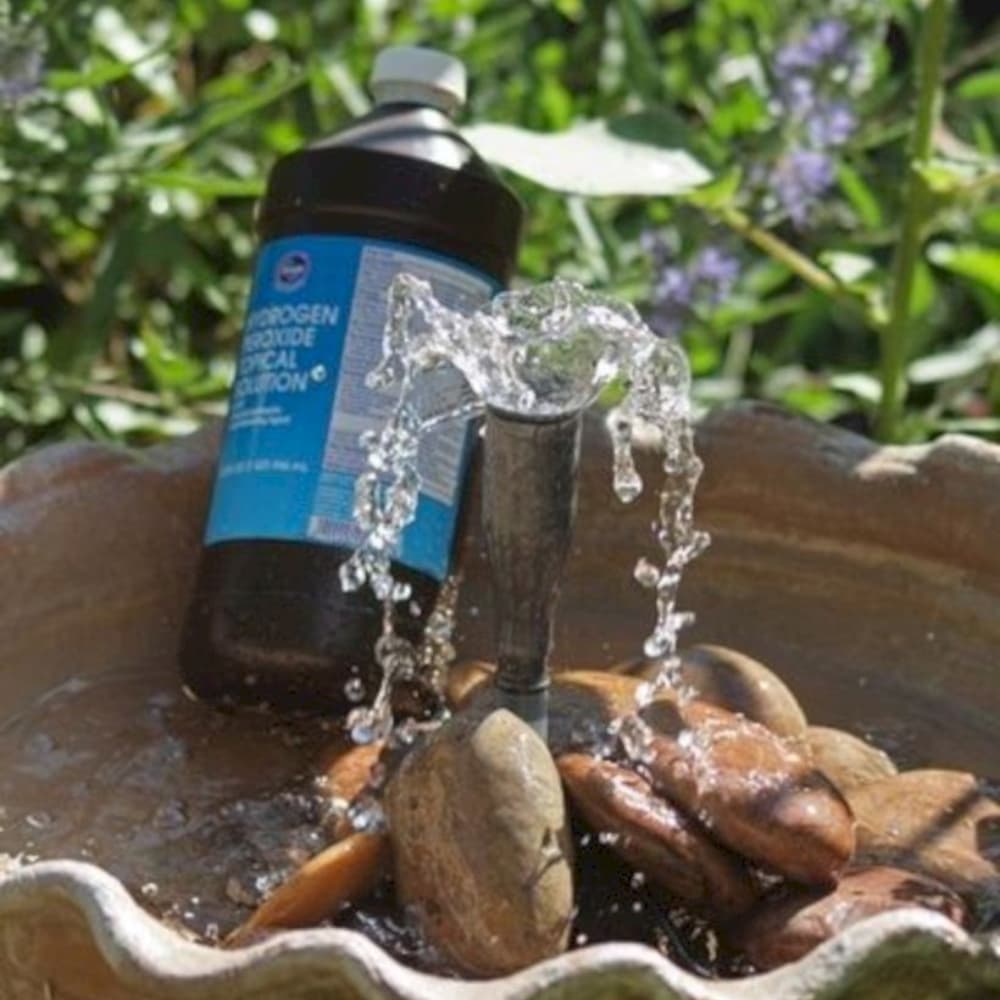
As well as removing algae, the chemical compound oxygenates the pond. To try this method, use 1/2 cup of 3% hydrogen peroxide for every 90 gallons of pond water.
Whiten Your Teeth
We’re back to food-grade hydrogen peroxide with this tip, so make sure you’re using a product that’s safe to ingest. We’ve seen that hydrogen peroxide makes a great mouthwash, and it makes sense that it also bleaches teeth. In fact, it’s used in many commercial whitening solutions.

For a stain-removing mixture, combine a teaspoon of hydrogen peroxide with baking soda until it makes a smooth, thick paste. Apply with a toothbrush, let it sit for a few minutes, and then rinse.
Clean the Litter Box
Kitty litter boxes can become rather unpleasant, even when cleaned and washed out regularly. Cat urine and various types of litter can combine to create a nasty smell, and can even degrade the plastic base of the box. To freshen it up for longer, wash the box with soapy water and then spray with hydrogen peroxide before adding litter.

Even better, if your cat pees somewhere and leaves a smell, pour hydrogen peroxide on the area, and leave for five minutes.
Make Your Own Deodorant
Because hydrogen peroxide kills bacteria and fungus, it makes for a wonderful deodorant. In fact, the above recipe for a stain-removing toothpaste also doubles as a deodorant — yes, really! As a reminder, that’s a teaspoon of hydrogen peroxide mixed with enough baking soda to make a smooth, thick paste. This mixture keeps in a Tupperware.
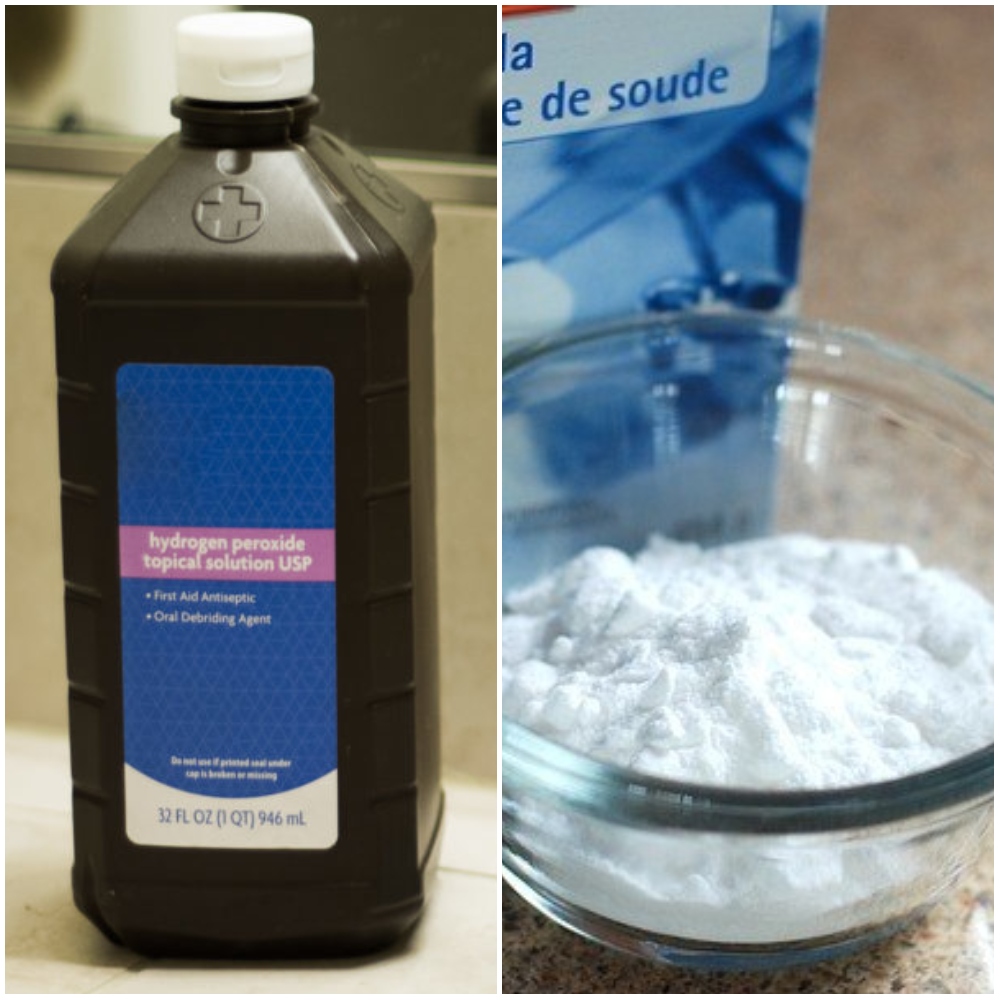
Alternatively, just spray a mixture of hydrogen peroxide and water under your arms, and watch as you stay sweat and odor-free all day long.
Speed Up Acne Healing
Acne is a skin condition that happens when hair follicles get clogged with oil and dead skin cells. Using hydrogen peroxide on acne can speed up the healing process, particularly because of its anti-bacterial and cleansing properties.
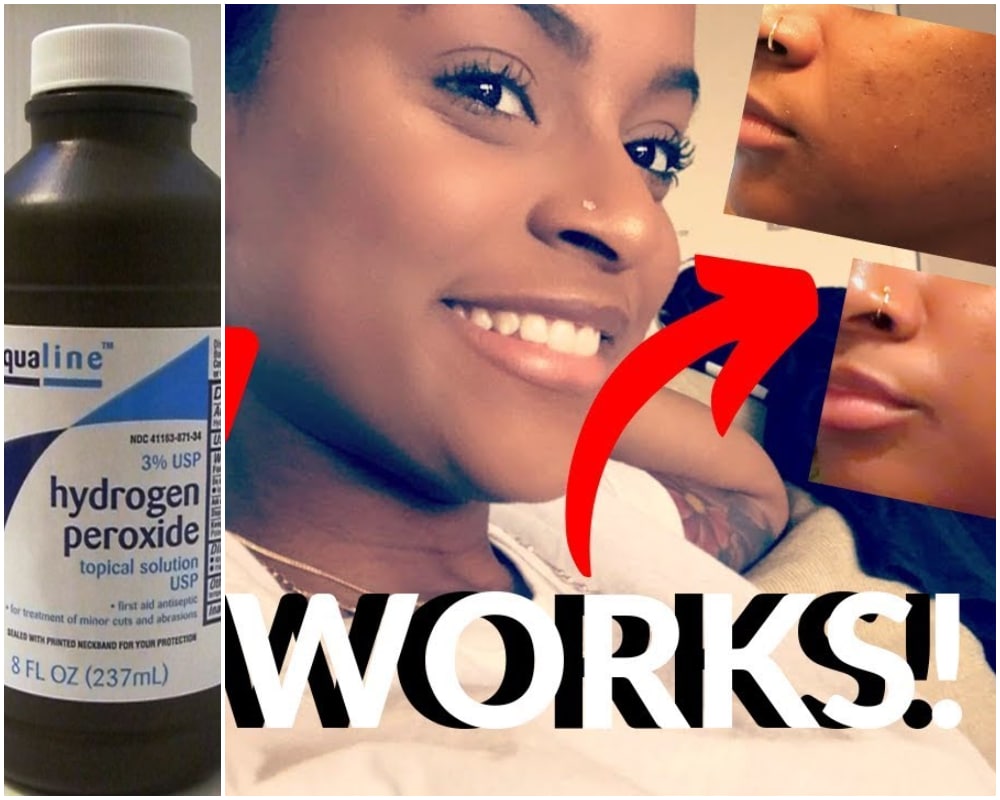
To try this, dampen a cotton ball with the liquid and apply it to infected areas. This method is best for young skin with whiteheads or a bacterial infection in an acne cyst. Use up to twice a day, for no longer than two consecutive days.
Work on Earwax
Most people know that shoving a Q-tip into your ear isn’t the most effective way of cleaning it. In fact, it even says on many Q-tip packets that the little cotton swabs shouldn’t be used inside the ear canal. Instead, reach for hydrogen peroxide to soften ear wax.
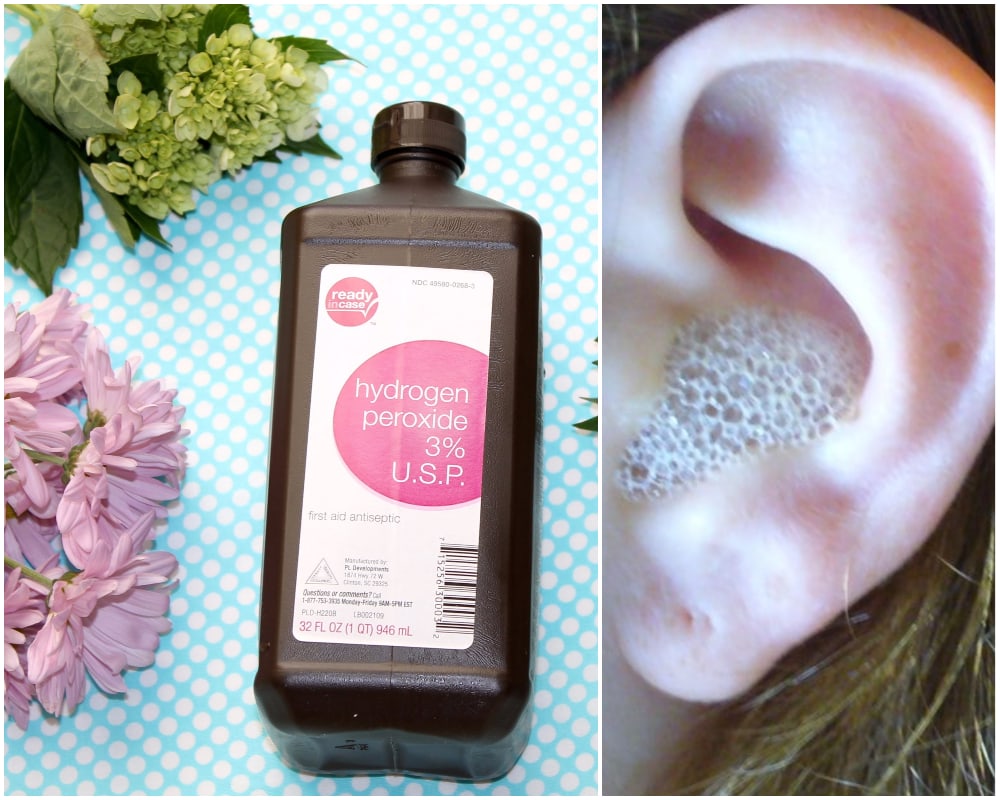
With your head tilted, add several drops of hydrogen peroxide into your ear and let it sit for around one minute. Note that using too much product can lead to skin irritation, so only use this method occasionally.
Make Your Tiles Sparkle
When it’s time to give your tiles some love, avoid harsh chemicals and instead opt for a hydrogen peroxide mixture. Use a paste of hydrogen peroxide and baking soda to scrub tiles, cover them with plastic wrap, and let them sit overnight. When you rinse it off, you’ll be shocked by how much the tiles sparkle.

Alternatively, make a mixture of hydrogen peroxide and water, and spray it onto tiles. Leave for a few minutes and wipe off. You can also add essential oils to this mixture.
Disinfect the Toilet Brush
We’ve recommended using hydrogen peroxide for cleaning your toilet bowl, so why wouldn’t we also recommend it for disinfecting the toilet brush, too? There are various ways to do this, depending on which method suits you best.
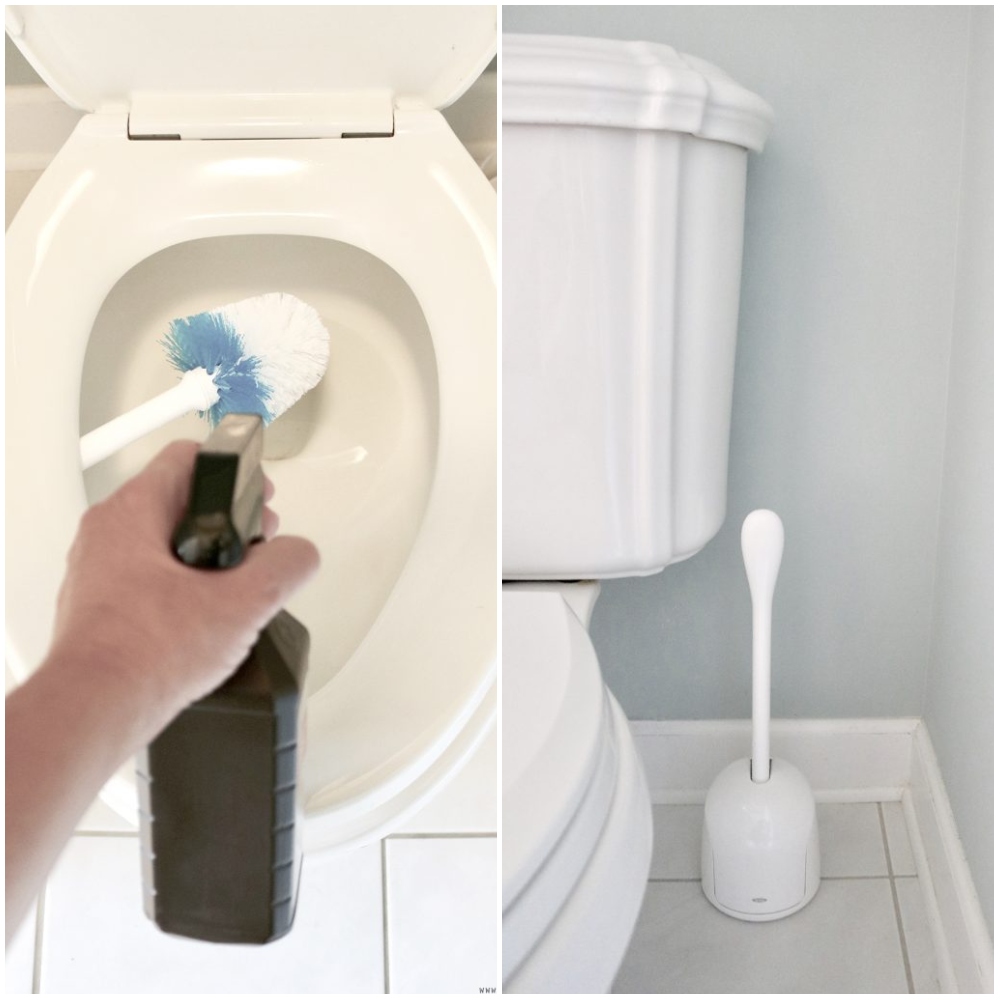
To disinfect a grimy and bacteria-filled toilet brush, spray the bristles thoroughly with hydrogen peroxide and leave to drip dry. Alternatively, purchase a toilet brush with a bowl-shaped base and always leaving your brush sitting in a solution of hydrogen peroxide.
Gradually Go Blonder
We’ve said that hydrogen peroxide can be a useful touch up for roots in between hair appointments, but it also has other hair-based uses. While we used to squeeze lemon juice directly onto our hair in the ‘80s and ‘90s (yes, really), a slightly more refined method works best for lightening hair.
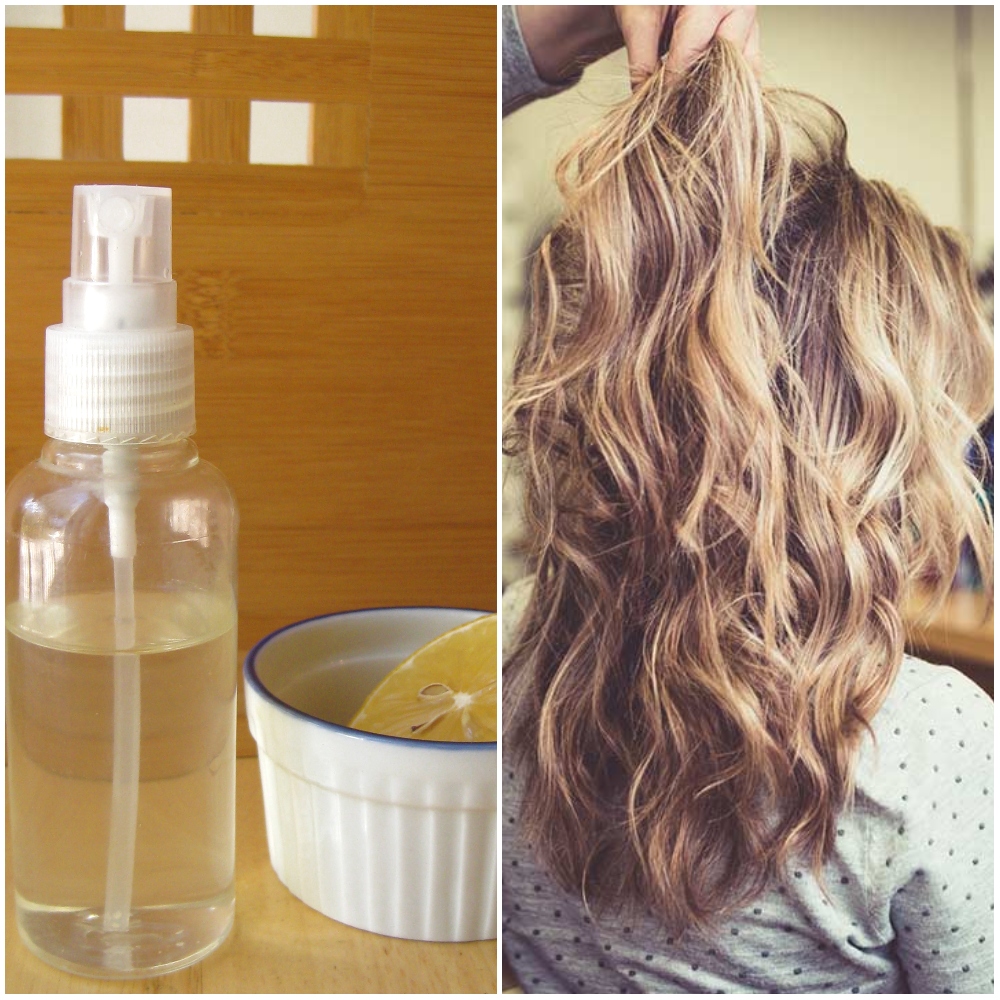
To lighten already blonde hair, combine 1/2 cup of water with 1/4 cup of hydrogen peroxide and 1/4 cup of lemon juice. Spray through hair and enjoy the results.
Clean Your Fingernails
Nobody wants to get caught with filthy fingernails or to have yellowing nail beds. To keep your nails nice and white, soak a cotton ball in hydrogen peroxide and dab it directly onto nails. As it does with teeth, fabric, and hair, it will brighten and whiten.
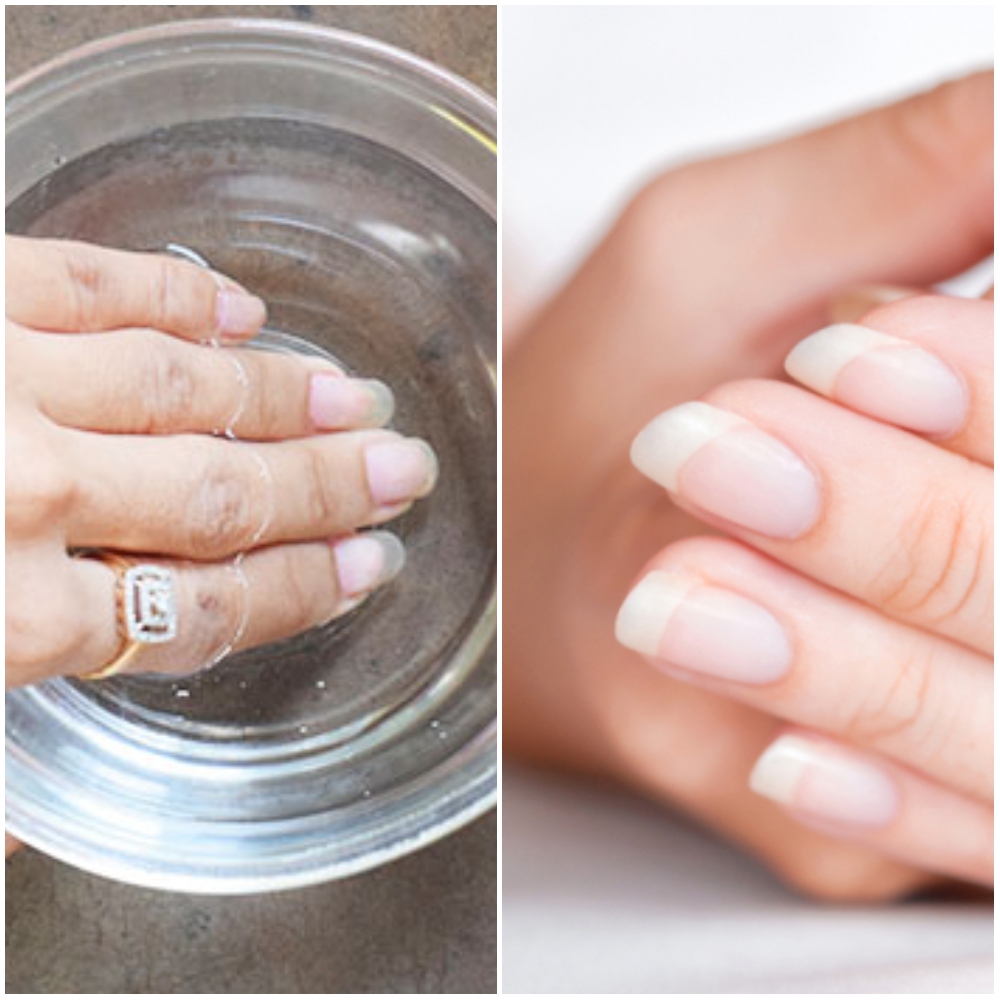
As another option, mix three to four tablespoons of the compound with half a cup of warm water and stir. Soak nails for around two minutes, and then rinse. The liquid also kills fungal nail infections.
Sort Out Your Toothache
Undeniably, one of the worst pains in the world is a bad toothache. It might start in your mouth, but soon it’s pressing on your jaw, radiating into your ear, and putting you completely out of action. With a toothache like this, it’s good to swirl liquids around the painful tooth — either salty water, liquid painkillers, or, you guessed it, hydrogen peroxide.

Swirl food-grade product around your mouth, hold for 30 seconds, then spit. This will reduce pain and inflammation.
Make a Relaxing Bath
Look, so far we’ve recommended hydrogen peroxide for growing plants, whitening teeth, disinfecting the toilet, cleaning appliances, and lightening hair. Did you really think that we wouldn’t tell you to just lie in a bath of the stuff?
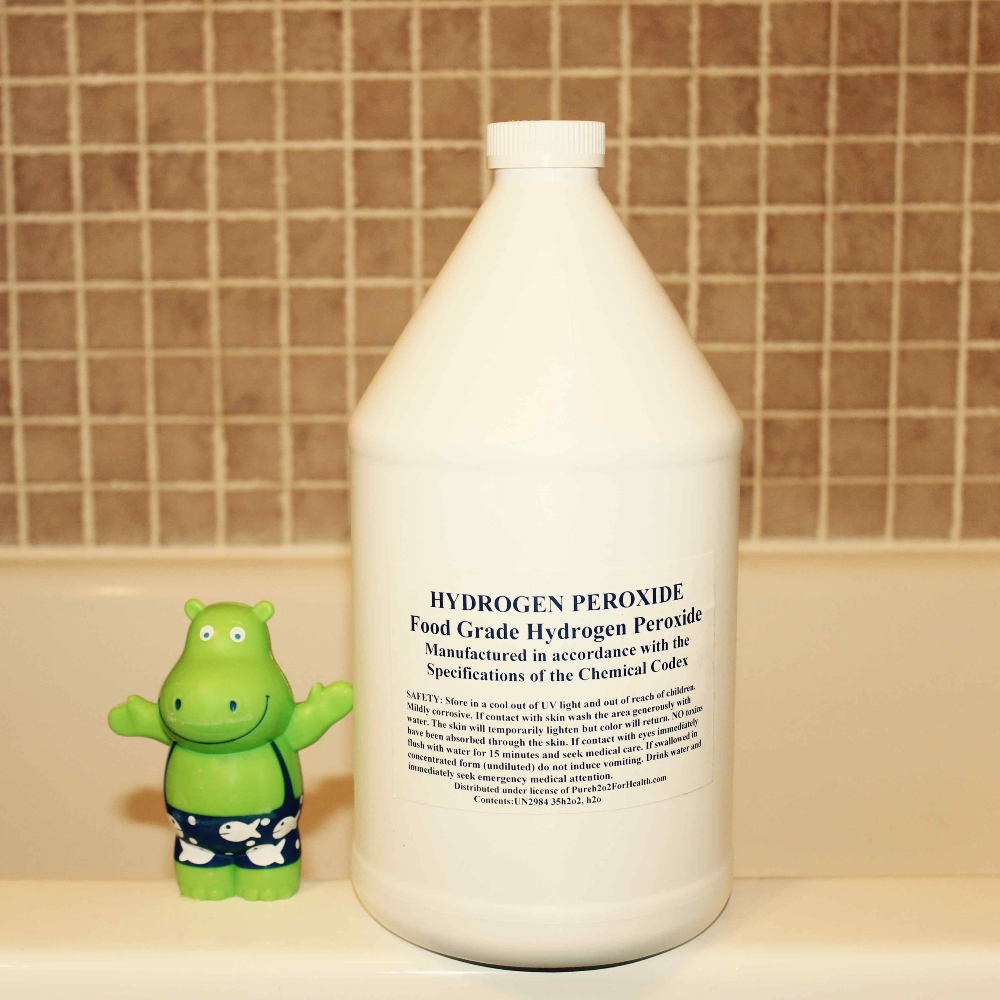
Hydrogen peroxide makes a good bath once a month for detoxification and oxygenation purposes. Add a cup and 1/2 of 35% food-grade product and Epsom salts to hot water. Then, lie back and enjoy.
Treat Musty Towels
Nobody wants to grab a towel and find themselves stuck with a musty old rag. We want our towels to be soft and fluffy, and smelling sweet as a daisy. Well, luckily for us, our beloved hydrogen peroxide gives towels a lovely pick me up.
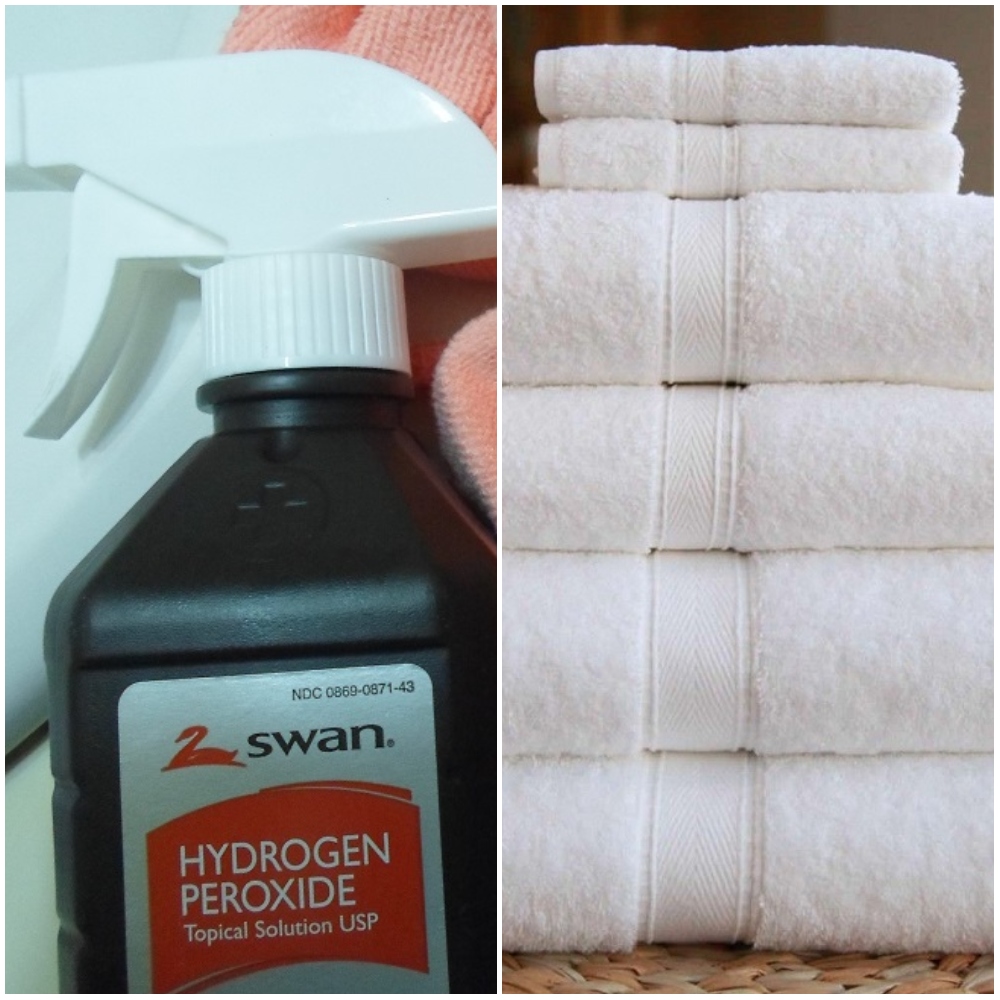
To make your towels fresh again, add 1/2 cup of vinegar and 1/2 cup of peroxide to your laundry, leave for 15 minutes, and then wash as normal. Alternatively, add a whole cup of hydrogen peroxide.
Make Your Own Toothpaste
We’ve already looked at several ways to use hydrogen peroxide inside the mouth, including as a mouthwash, a stain remover, and a toothache painkiller. Well, you can also just scrub it directly onto your teeth as you would a regular toothpaste. In fact, Colgate has released a hydrogen peroxide version of their toothpaste.

For a more natural toothpaste, make a hydrogen peroxide and baking soda paste, and add coconut oil. The oil helps to remove oil soluble food debris and bacteria.
Boost the Dishwasher
We’ve looked at dishwasher bombs made from hydrogen peroxide, used to degrease and thoroughly clean the appliance. However, there are more ways to use the liquid compound in the dishwasher. For example, it makes an effective and chemical-free rinsing aid for dishes.
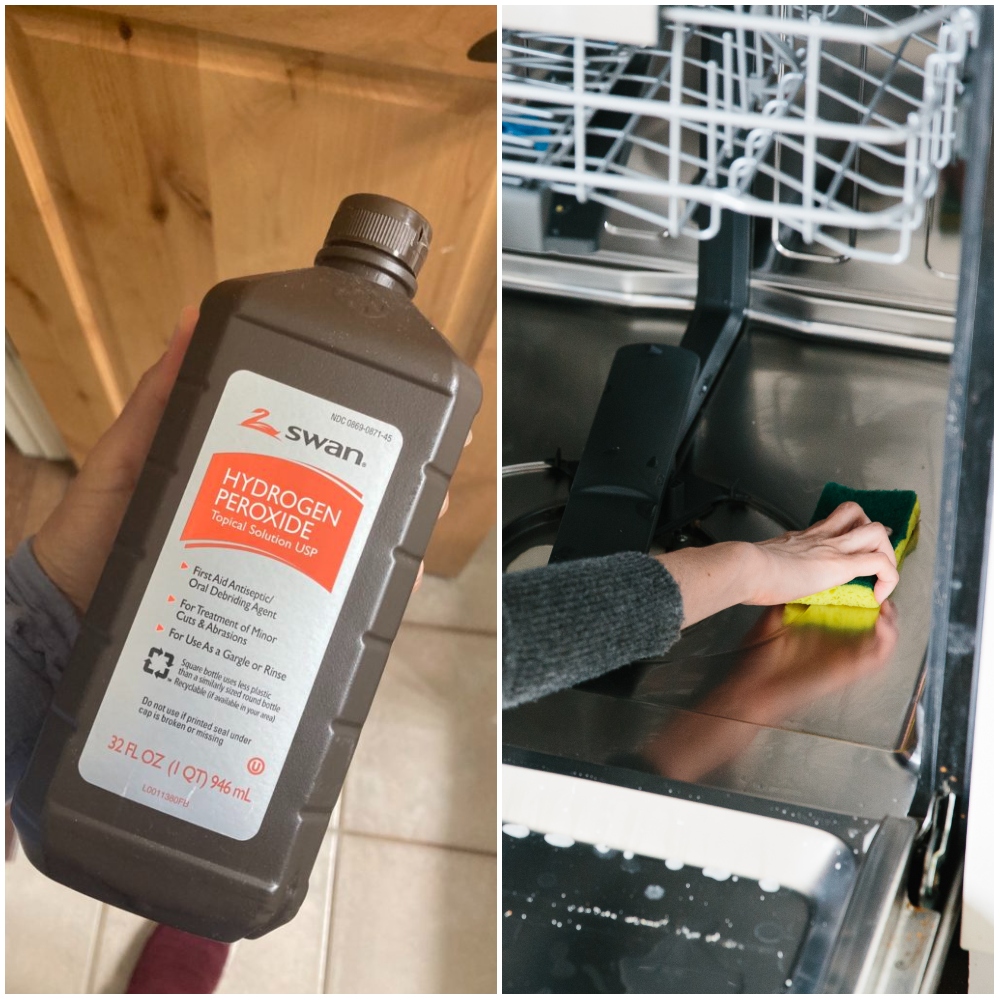
Take one cup of 3% product and mix with 10 to 15 drops of essential oils, such as cinnamon, lemon, or lavender. Pour this natural, homemade rinse aid into the dishwasher soap compartment, and enjoy the squeaky clean results.
Sterilize Makeup Brushes
Makeup brushes pick up lots and lots of bacteria and germs, and we certainly don’t want to spread those all over our faces. For this reason, it’s important to keep makeup brushes clean by washing them regularly. Of course, you can buy special makeup brush shampoo and washing accessories, but hydrogen peroxide does the trick just fine.
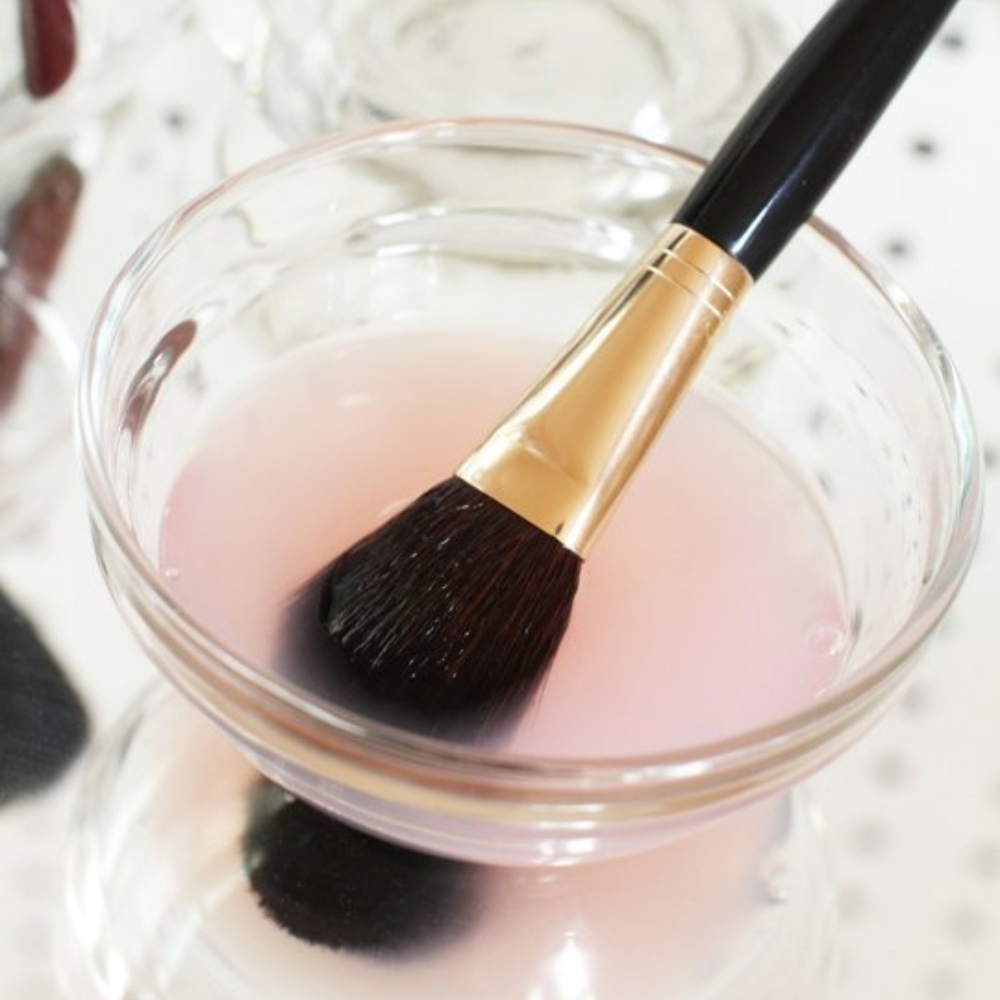
Put one teaspoon of 3% product into a bowl of water, and soak the brushes in the mixture. Your skin will thank you.
Keep the Shower Fresh
We’ve suggested it for tiles, we’ve suggested it for toilets and now we’re suggesting it for showers too. It’s a no-brainer really, as hydrogen peroxide’s antifungal, antiviral, and antibacterial properties make it tough on mold and mildew. As we’ve pointed out, it’s also much more environmentally friendly than chlorine bleach.
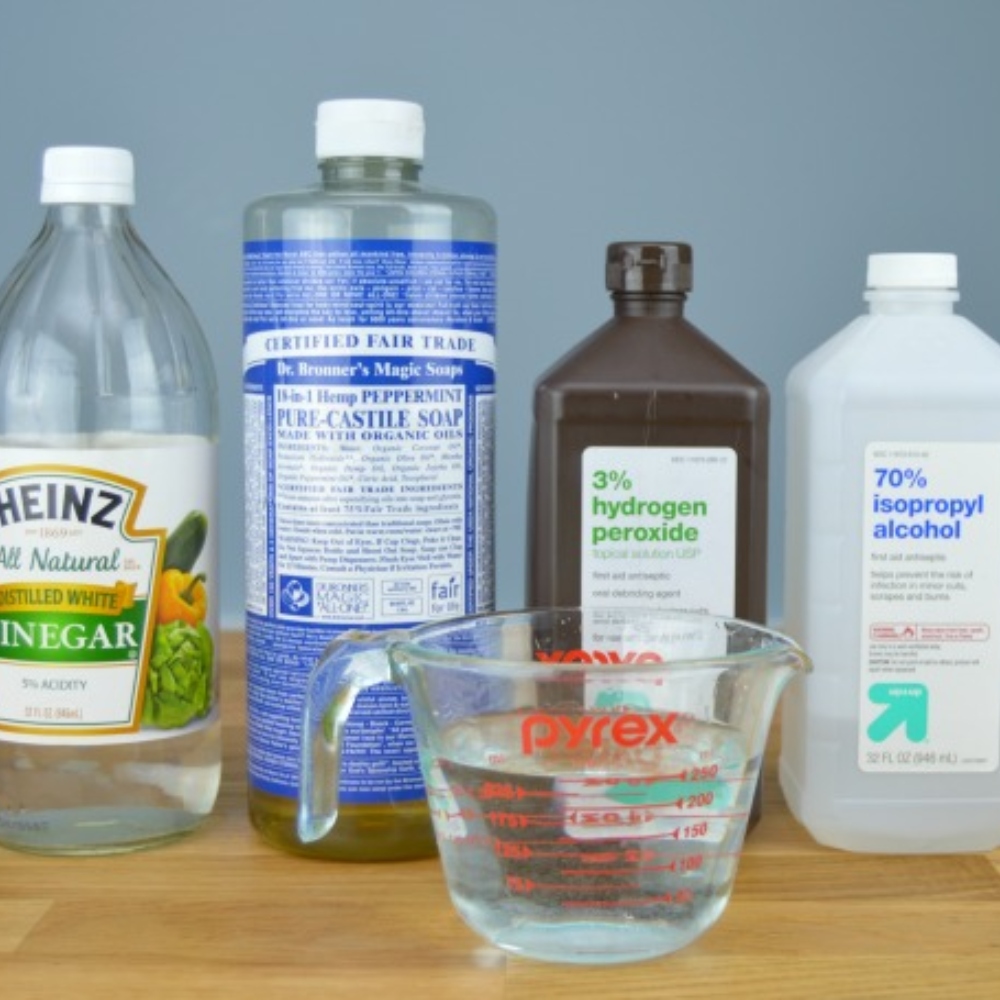
It’s a good idea to keep a bottle of hydrogen peroxide or a hydrogen peroxide mixture in a spray bottle by the shower. That way, you can spritz it down each time.
Really Clean Your Sponges
Much like dishcloths, kitchen sponges absorb and carry all sorts of germs and bacteria. Even though they’re used for cleaning, the porous nature of a handy sponge means they’re often bursting with unpleasant things.
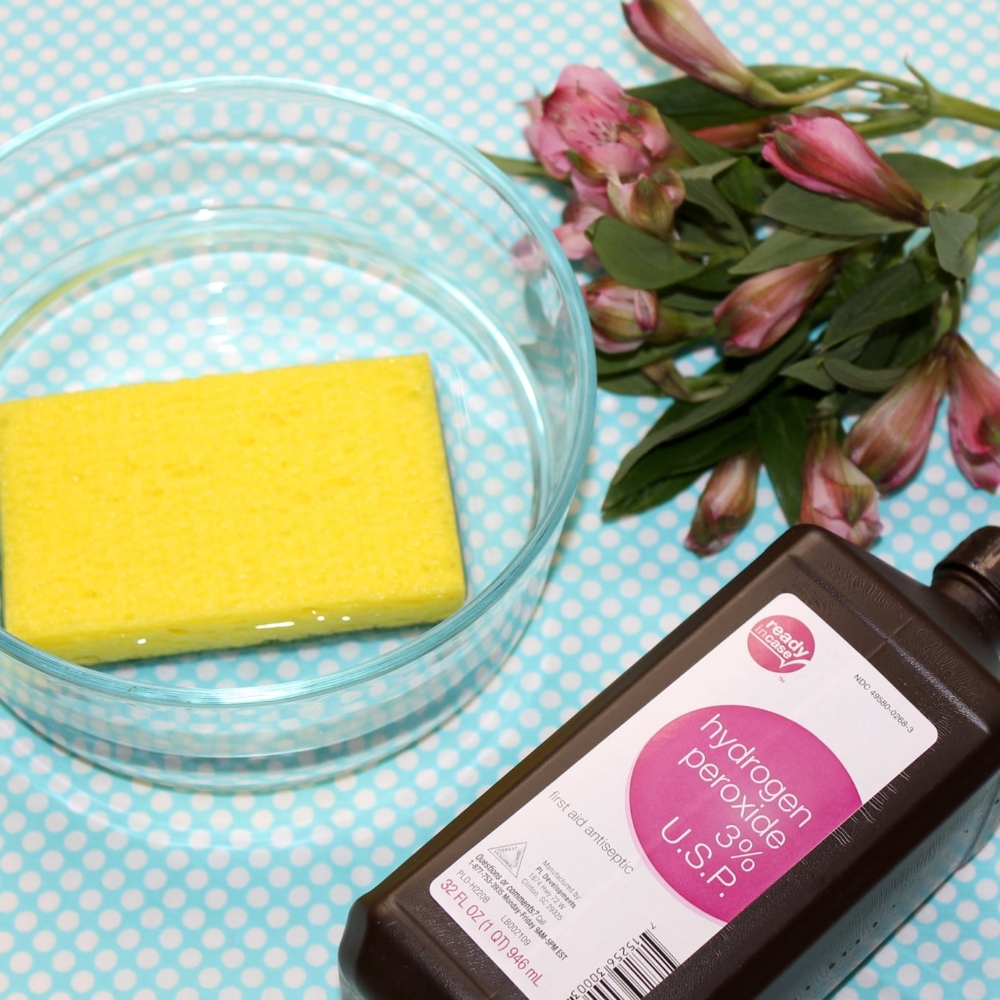
Though it can be tempting to just toss your kitchen sponge in the trash when it’s dirty, it’s more cost-effective and environmentally conscious to soak it in hydrogen peroxide. This way, you’ll make it last a little longer, and it’ll be nice and fresh.
Whiten Your Grout
We know that hydrogen peroxide makes a great surface cleaner, but it’s also good at getting stains and mold off tiling grout. Grout generally starts off as white, but it can end up a nasty brown or beige color after some time. To brighten it up, reach for your homemade hydrogen peroxide spray or paste.
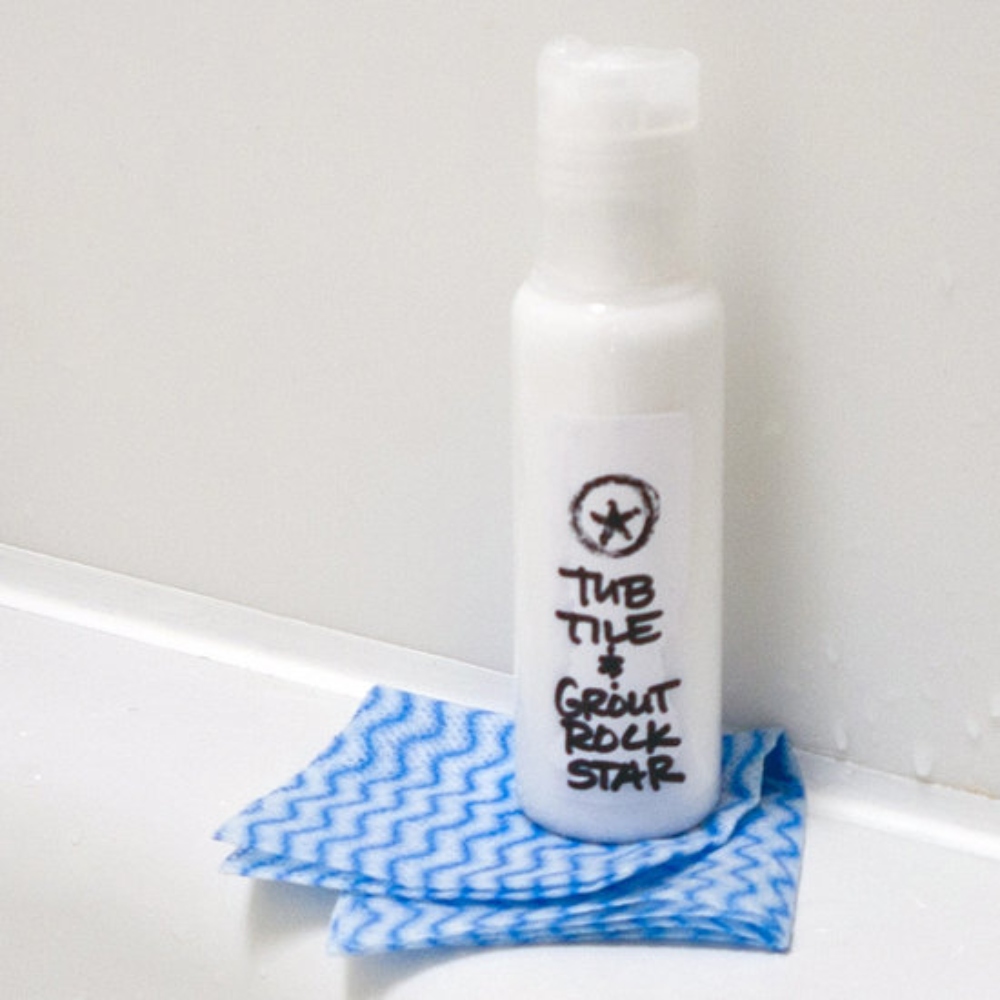
To tackle grimy grout, mix 1/2 cup of baking soda, 1/4 cup of hydrogen peroxide, and one teaspoon of dish soap. Spoon onto the grout, wait for five to ten minutes, then scrub and rinse.
Scrub Off Food Debris
Baking and cookie sheets end up absolutely covered in cooked-on stains that can seem impossible to remove. How many of us just resign ourselves to using a stained baking sheet because we think they can’t be cleaned any more? Well, no more!
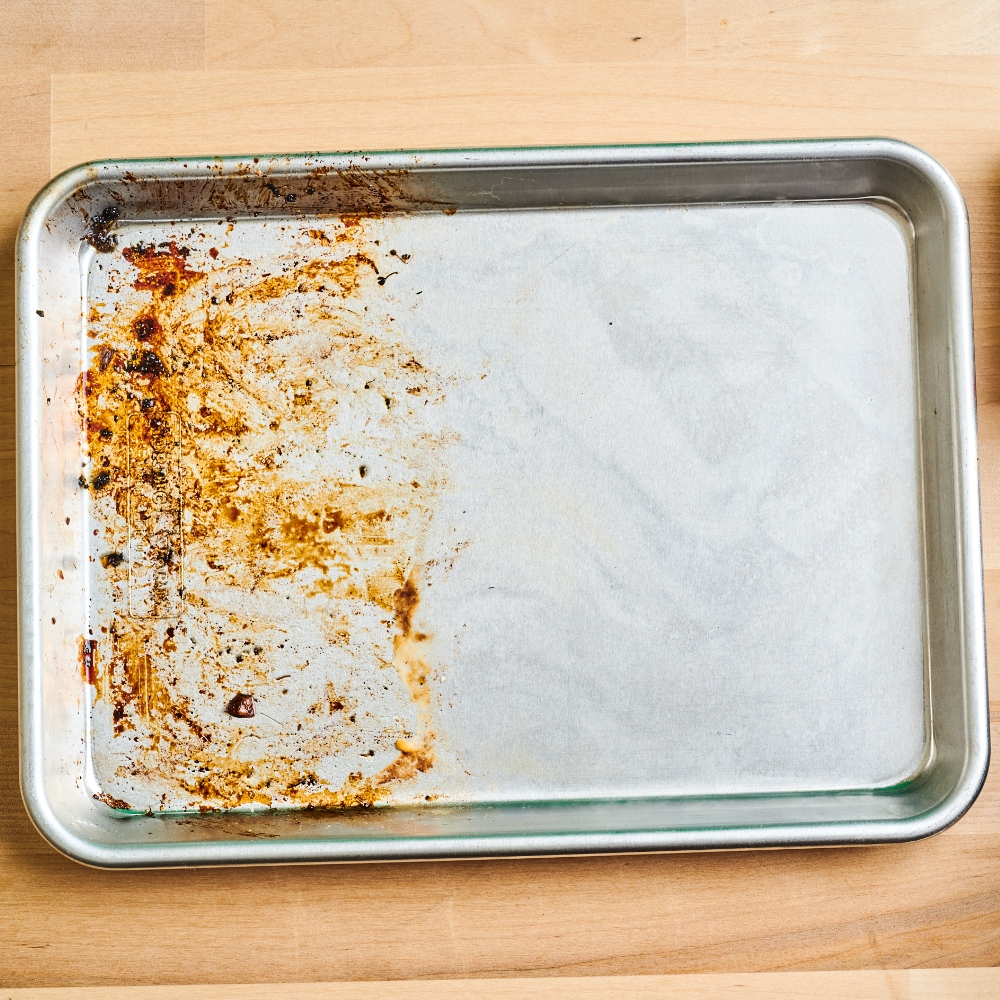
Take your baking soda and hydrogen peroxide paste and spread it across a baking sheet. Leave the sheet for two to three hours, and wipe the mixture off with a paper towel and water. Either rinse or scrub, depending on the remaining stains.
Fight Athlete’s Foot
Athlete’s foot can be a tough infection to deal with and causes lots of irritating itching. Because hydrogen peroxide is anti-fungal, it works to kill the fungus on the surface of feet. It also kills any bacteria that may be on the surface of the foot, thereby avoiding further infection.

To try this, put your feet into a solution of equal parts hydrogen peroxide and water. Note that this will sting if your feet have any cuts or scrapes.
Deal With Pit Stains
It makes a great, environmentally-conscious deodorant, but hydrogen peroxide also removes pit stains from the underarms of your clothing. Of course, with your homemade deodorant you’ll have no stains in sight, but reach for the hydrogen peroxide for stains caused by commercial products.
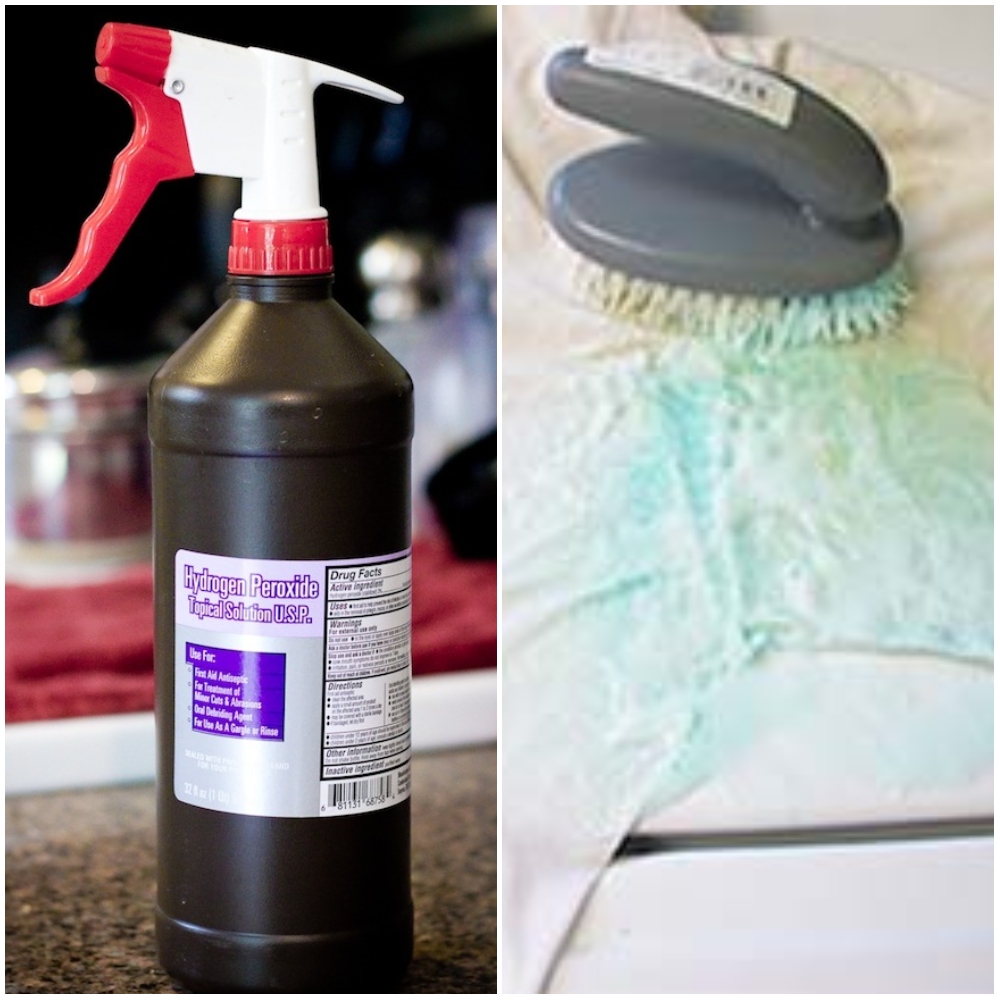
Mix two parts of the compound with one part dish soap, and spray the solution directly onto underarm stains. After 30 minutes of soaking, rinse and put through the washing machine.
Treat Yeast Infections
There are a number of ways to treat yeast infections, including a variety of home remedies. There are various different types of yeast infections that can occur on the body, but all are caused by yeast-like fungi named candida.
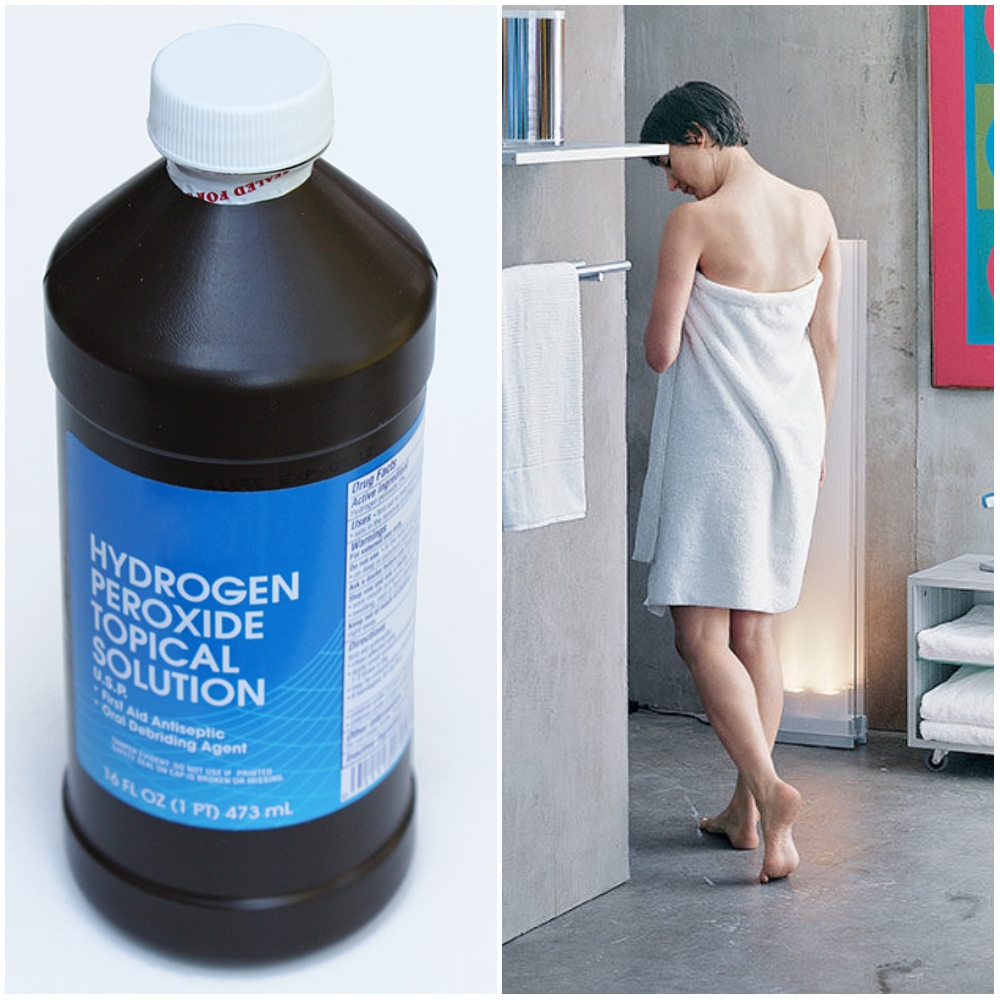
Before using hydrogen peroxide on a yeast infection, make sure you dilute it with water to avoid skin irritation. Taking a bath in a mixture of the liquid and water can prevent yeast growth.
Disinfect Kid’s Toys
Kids play with toys every single day, which means they’re bound to become coated in a sticky and grimy film, and covered with crumbs, glitter, and dirt. Rather than let your kid risk putting these nasties into their mouth, disinfect everything with a hydrogen peroxide solution.
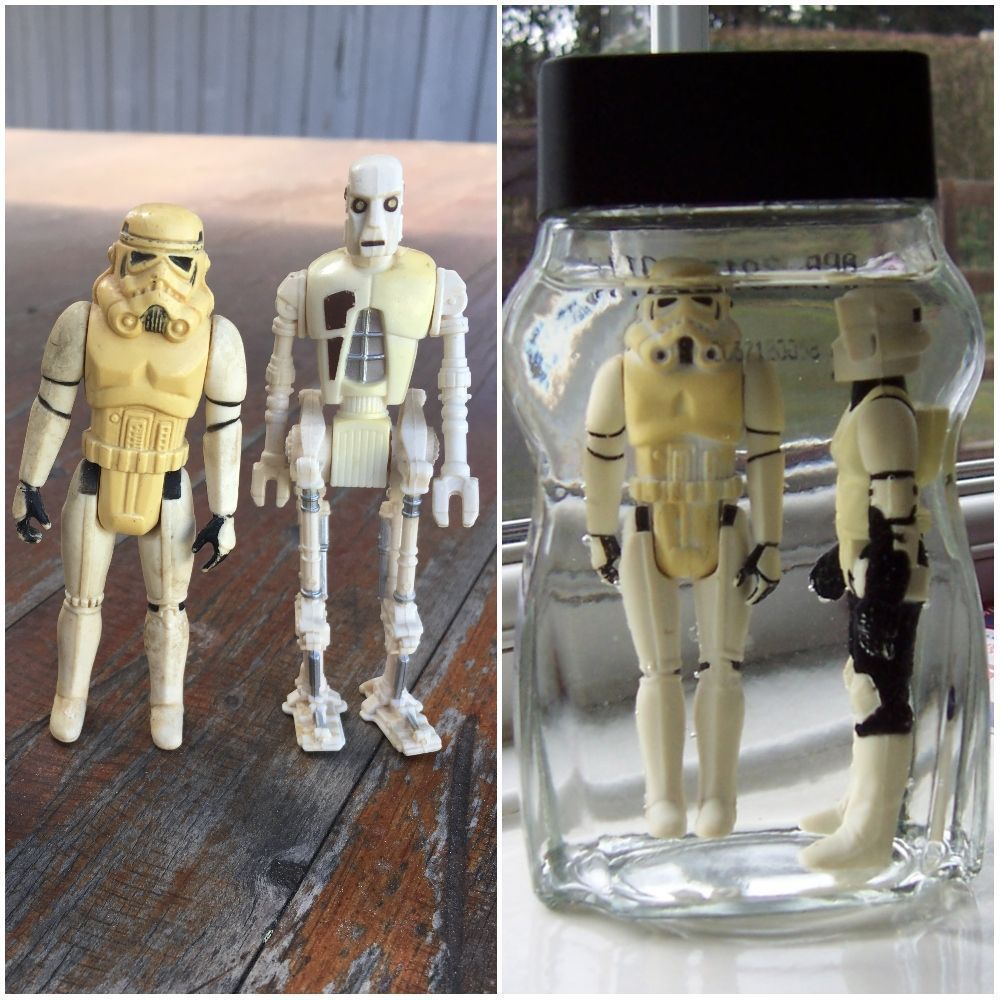
Either spray the toys, wipe them directly with the liquid, or soak them in a solution of the stuff. Avoid using this method for painted toys as the compound may remove paint.
Clean the Refrigerator
Another household area that can end up full of grime is the refrigerator. As with sponges, dish rags, and dish towels, refrigerators play host to bits of food debris, various bacteria, and questionable smells. Because it’s usually full, we can’t always see how dirty the refrigerator is.
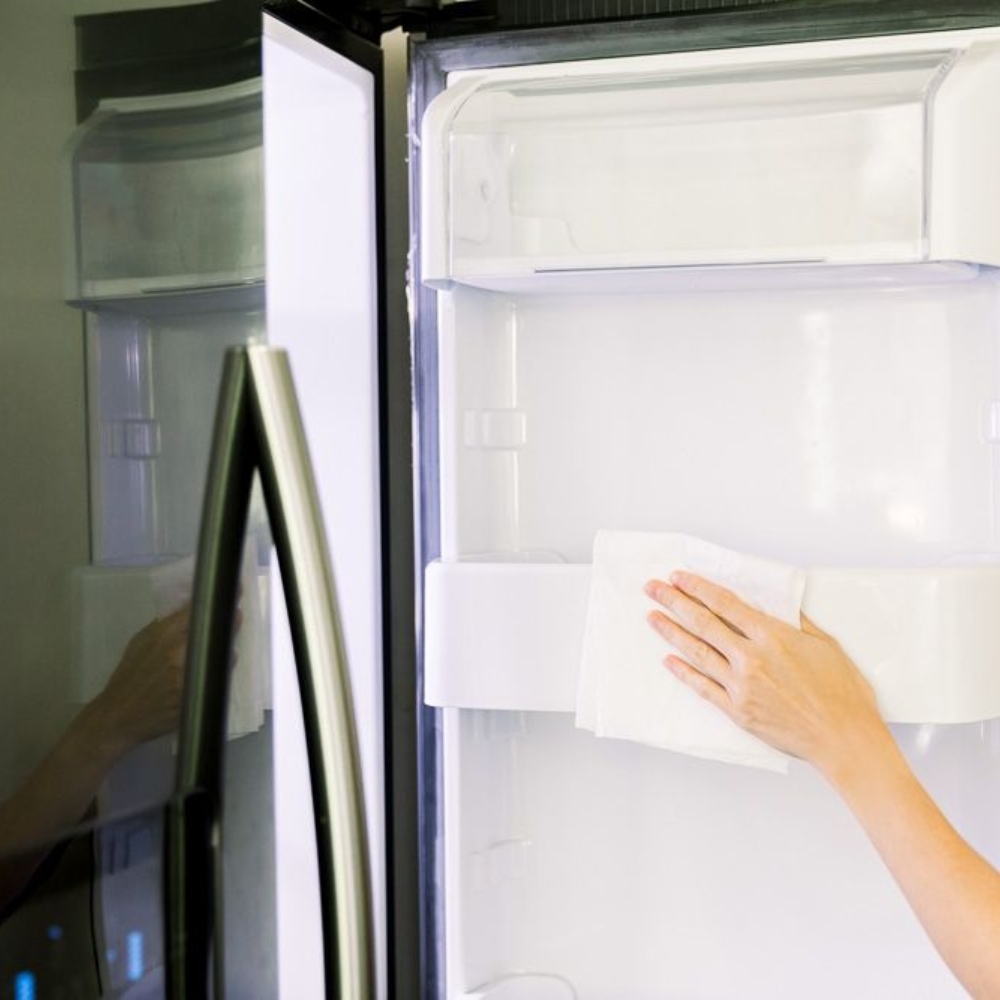
As with the shower, keep a bottle of hydrogen peroxide solution in the kitchen so that you can spray and wipe it down between deep cleans.
Sanitize Your Toothbrush
Since it’s so great at keeping teeth white, breath fresh, and toothaches calm, why not sanitize your toothbrush in hydrogen peroxide too? There are various methods for this, from soaking the toothbrush in the solution mixed with water, to rinsing it with the product after each wash.
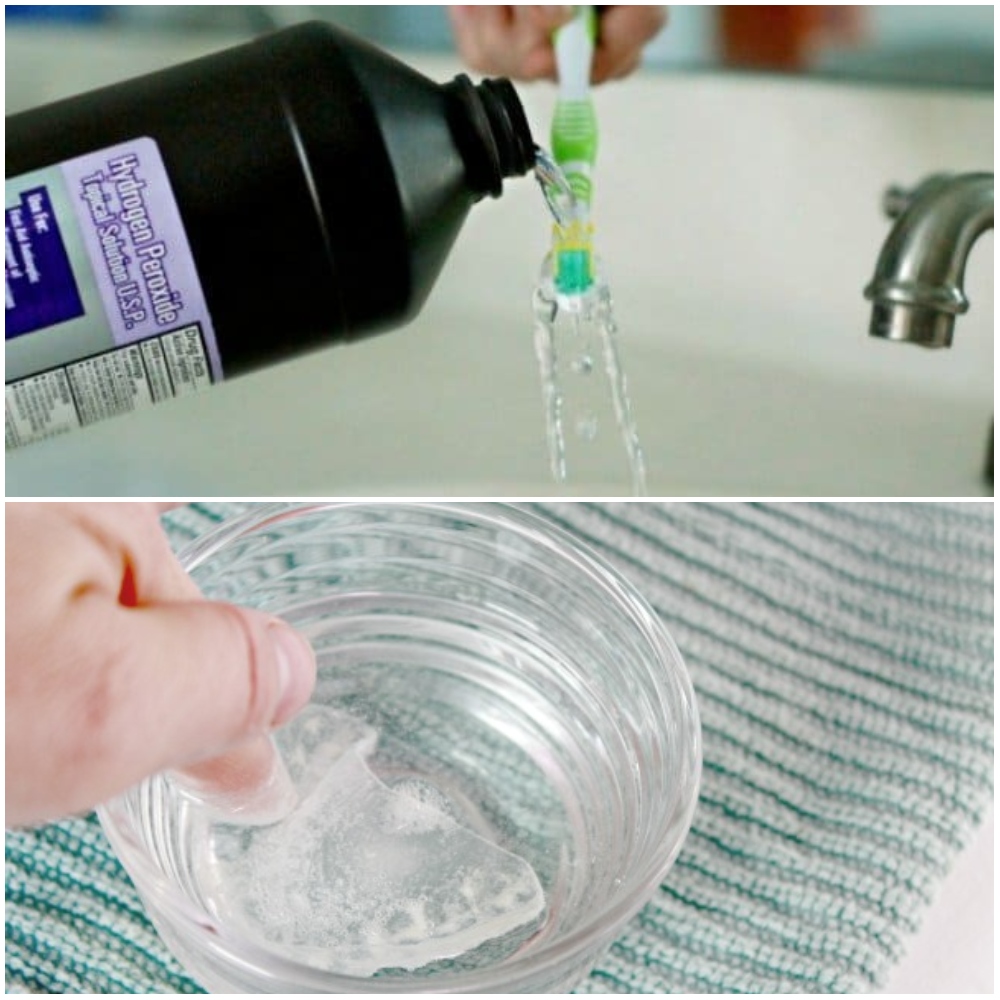
This method is also a great option for sanitizing retainers. In both of these cases, make sure to use a food-grade product, rinse the items afterward, and don’t swallow anything.
Mop the Floors
If you don’t know what to do with hydrogen peroxide at this point, we don’t know what to tell you. Clearly, it’s amazing at cleaning all manner of things, and for that reason, it’s a wonderful addition to your mop bucket.
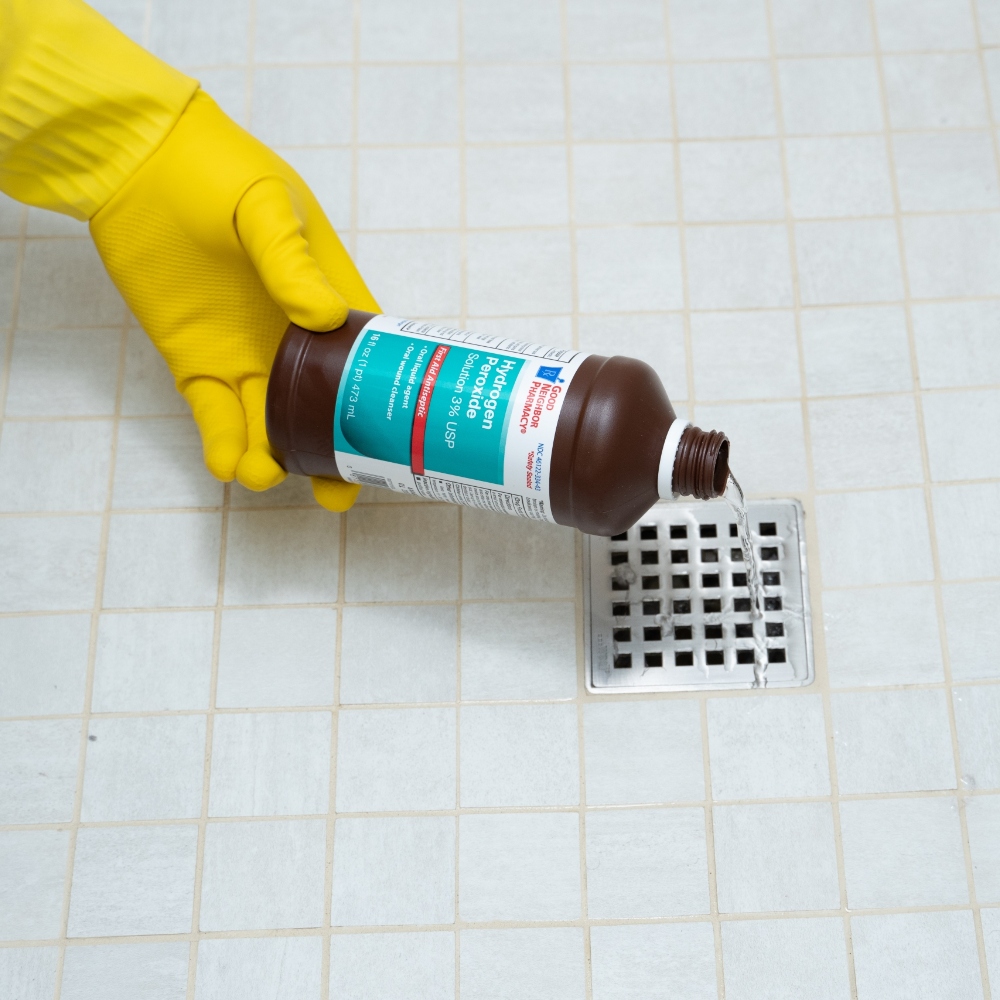
Mixing half a cup of the liquid compound with one gallon of hot water creates a liquid that will make floors shine. Using this rather than bleach means you won’t be inhaling harmful chemicals or leaving those chemicals on your floors for pets to lick.
Clear Out Lunch Box Grime
As with the refrigerator, kid’s lunch boxes are a breeding ground for germs and bacteria. In order to keep them spick and span, spritz them with hydrogen peroxide, which will stop the spread of anything unpleasant.
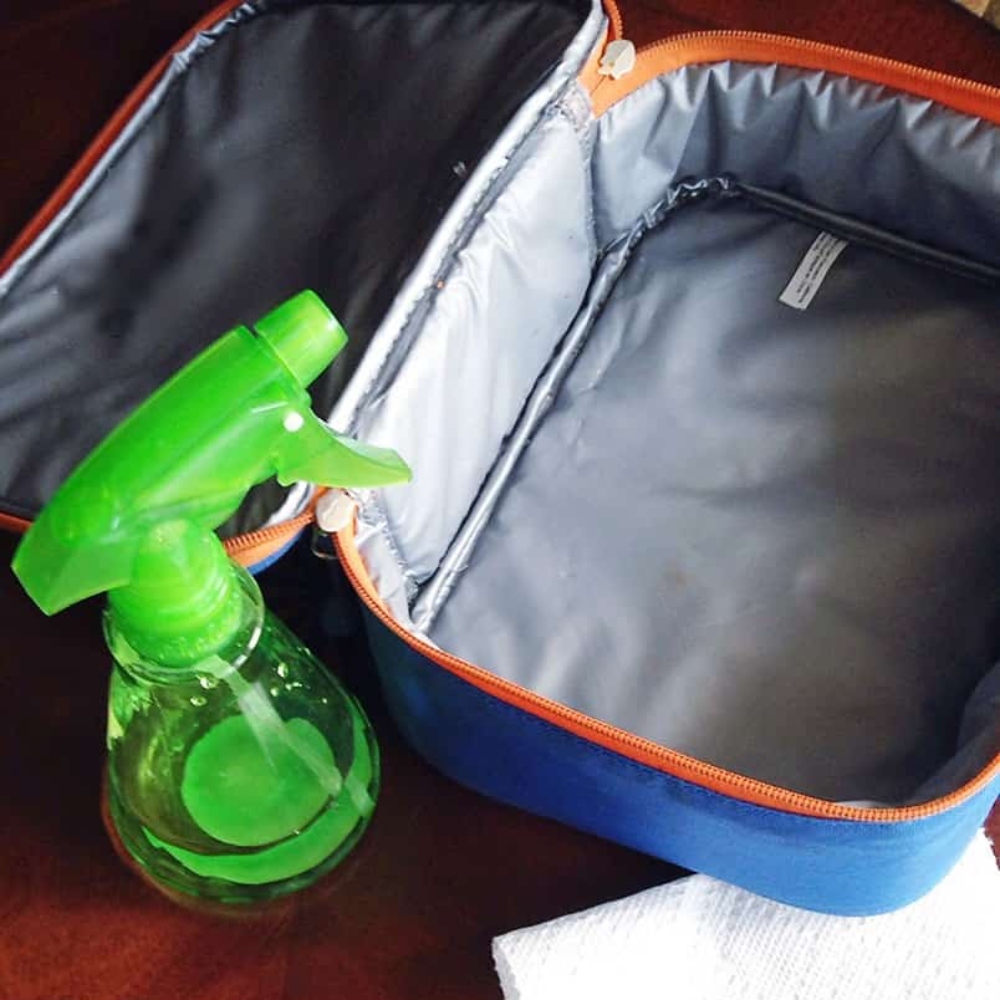
As another option, you can fill a plastic lunch box with the liquid and let it soak before rinsing it with water. This stops any mold from forming and keeps Tupperwares safe to use. Again, doing this is a great alternative to using harsh chemicals.
Keep the Humidifier Clean
Lots of people use humidifiers to make the air they breathe moister. Because they produce steam, humidifiers can be prone to collecting mold and could end up pumping mold spores around a room.
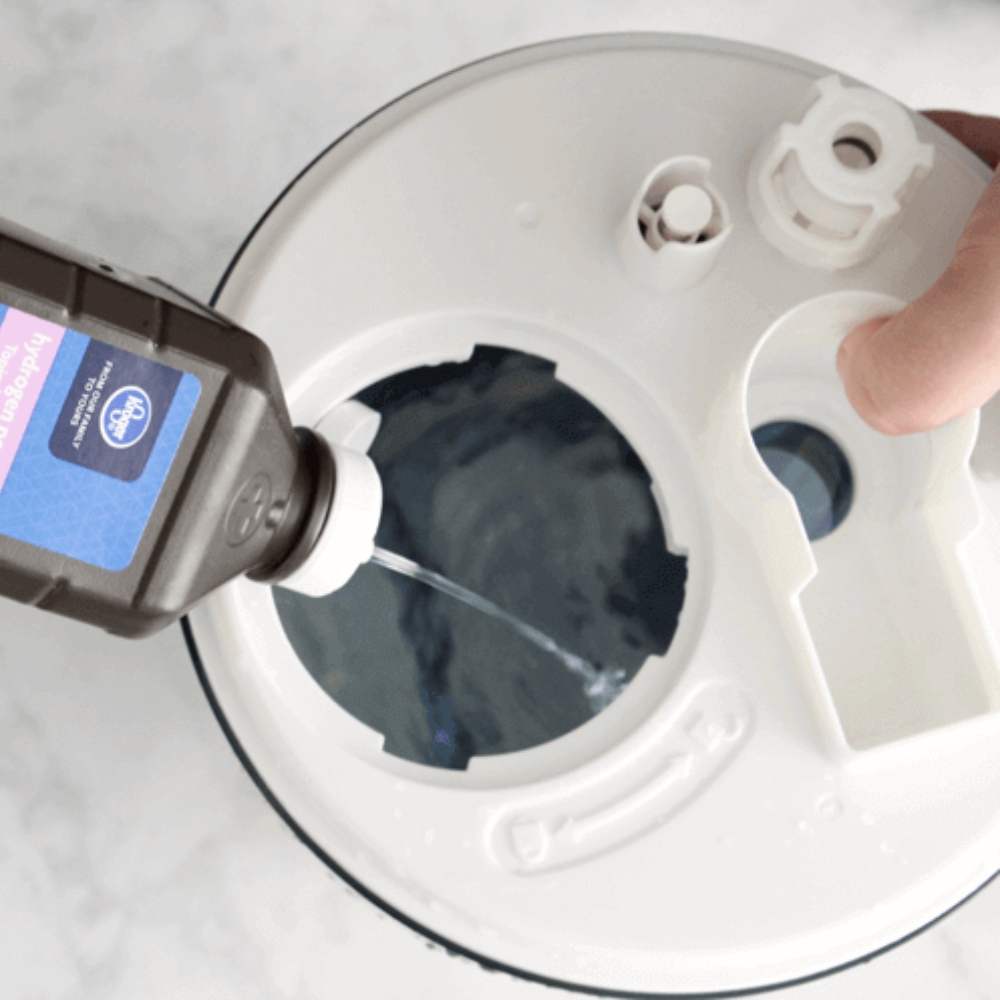
To make sure that your humidifier is producing clean steam, deep clean the machine using a 3% concentration of hydrogen peroxide. Use one pint of the product per gallon of water used. To keep bacteria at bay in general, use one to three drops in the humidifier.
De-Gunge the Shower Curtain
Last, but certainly not least, is the gungy shower curtain that needs a facelift from some good old hydrogen peroxide. There are several ways to achieve this, starting with just throwing it in the washing machine along with 3% hydrogen peroxide in a rinse cycle.
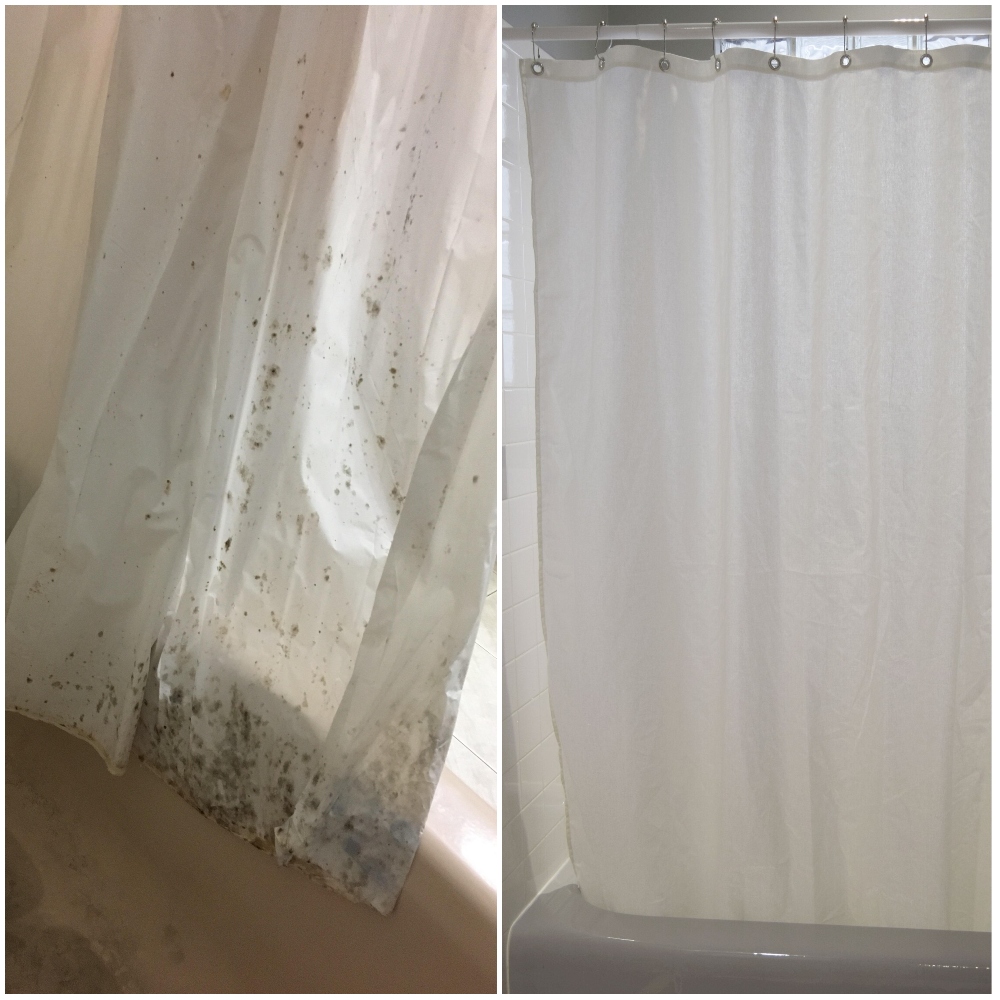
If your curtain is just starting to show signs of mold and mildew then you can spray it directly with the liquid mixed with water, and leave to sit for five to ten minutes, and then rinse.